Last time I enjoyed snowboarding in the mountains so much that I’ve decided to do that once more, straight away. The next season is a year away, so why wait? After all, I’m now a freelancer, ain’t I?
There was also another reason to come back to the mountains: I’ve recently got the GoPro Hero 5 action camera, which yearned to be used!
So I’ve found an affordable accommodation in the ski area of Les Sybelles, France, for eight days, which included a six-day ski-pass. Remembering how awesome it’s been to stay right at a ski slope last time, I’ve chosen a hotel in the village Les Bottières , which claimed to be only 50 metres away from a ski lift. This proved to be not quite accurate, but I’ll tell you more on that further on.
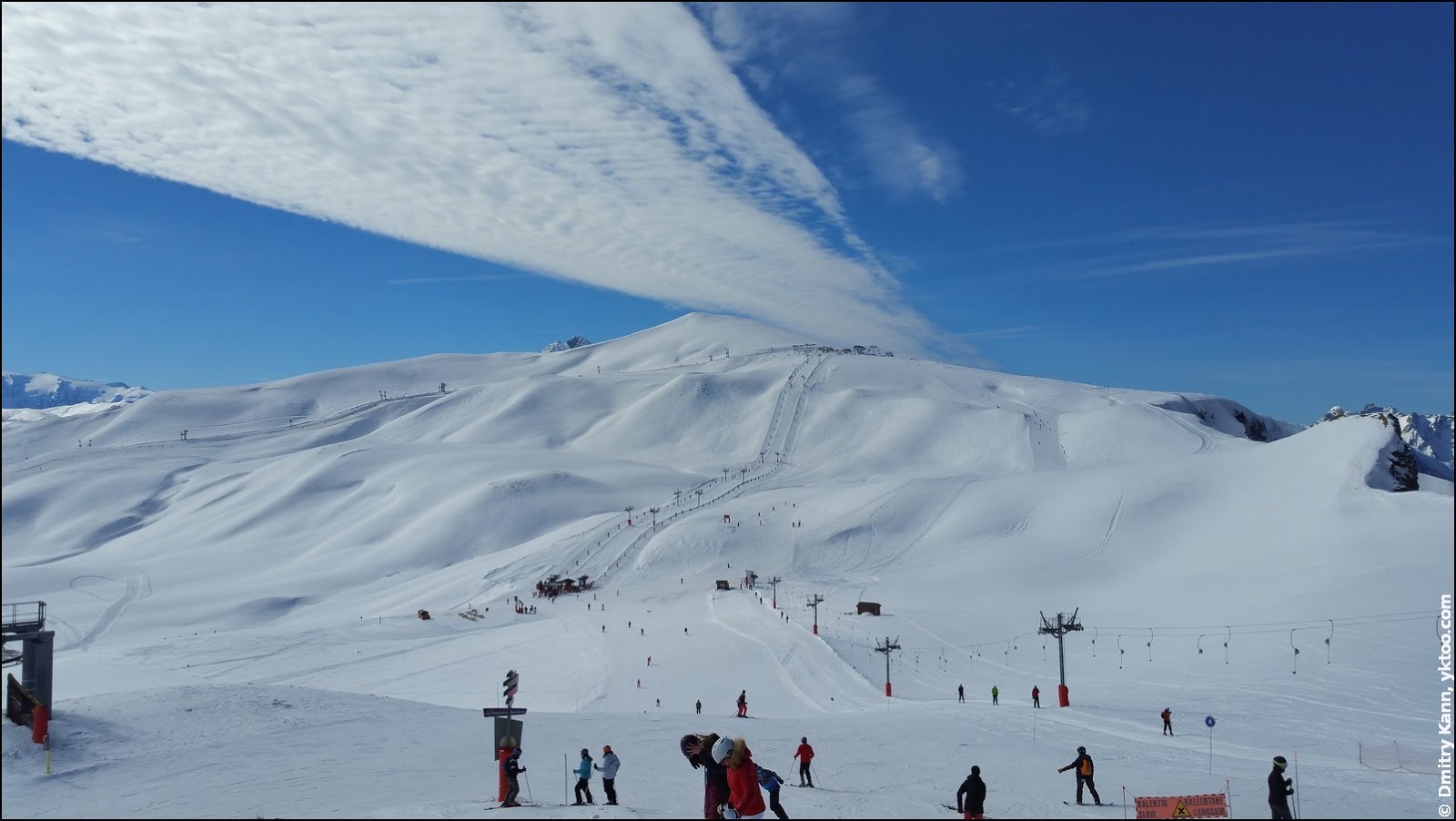
Road to Les Sybelles
This time around we went with our car, which was timely prepared for the winter. My past experience also prompted me to buy snow chains, which turned out to be a great idea later on. The distance to Les Sybelles is about 1100 km (684 mi), and in theory it could have been covered in ten hours.
Long before the dawn, around five in the morning, have we loaded our cargo of food, winter gear and clothes and set off for France via Belgium and Luxembourg.
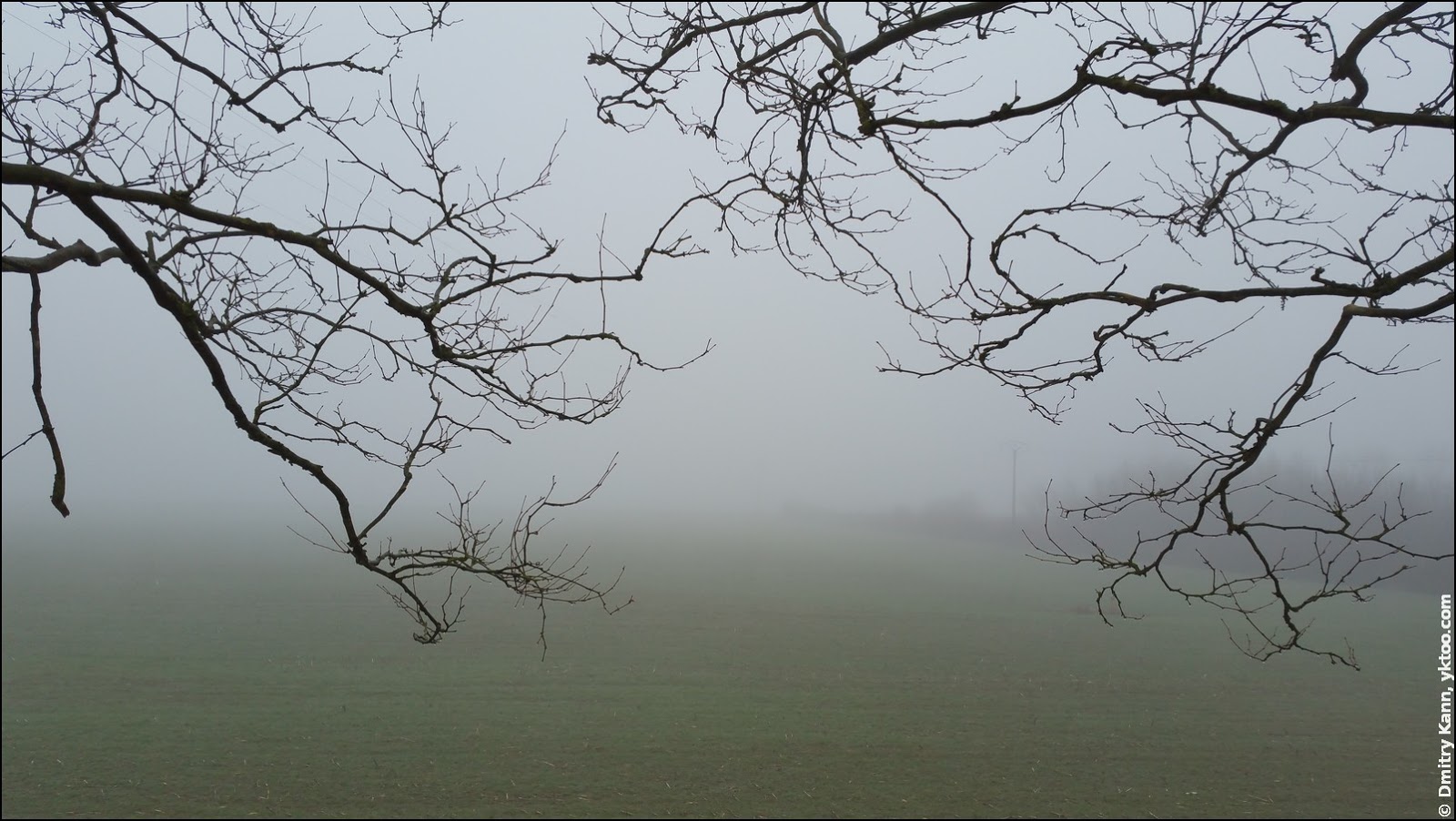
The entire way to France didn’t remind us of winter at all. Netherlands, Belgium and Luxembourg welcomed us with spring weather and temperatures above +10 °C (50 °F). The first 800 km we’d driven without a hiccup, just stopped a couple of times for a coffee.
The French part of our trip mostly went via a toll-road, with a perfect surface, 130 km/h (81 mph) speed limit and no delays. However when we approached the Alps, next to Lyons, we got stuck in a huge, 15 km long traffic jam. The congestion was caused by a toll-gate, which was way too small for the traffic:
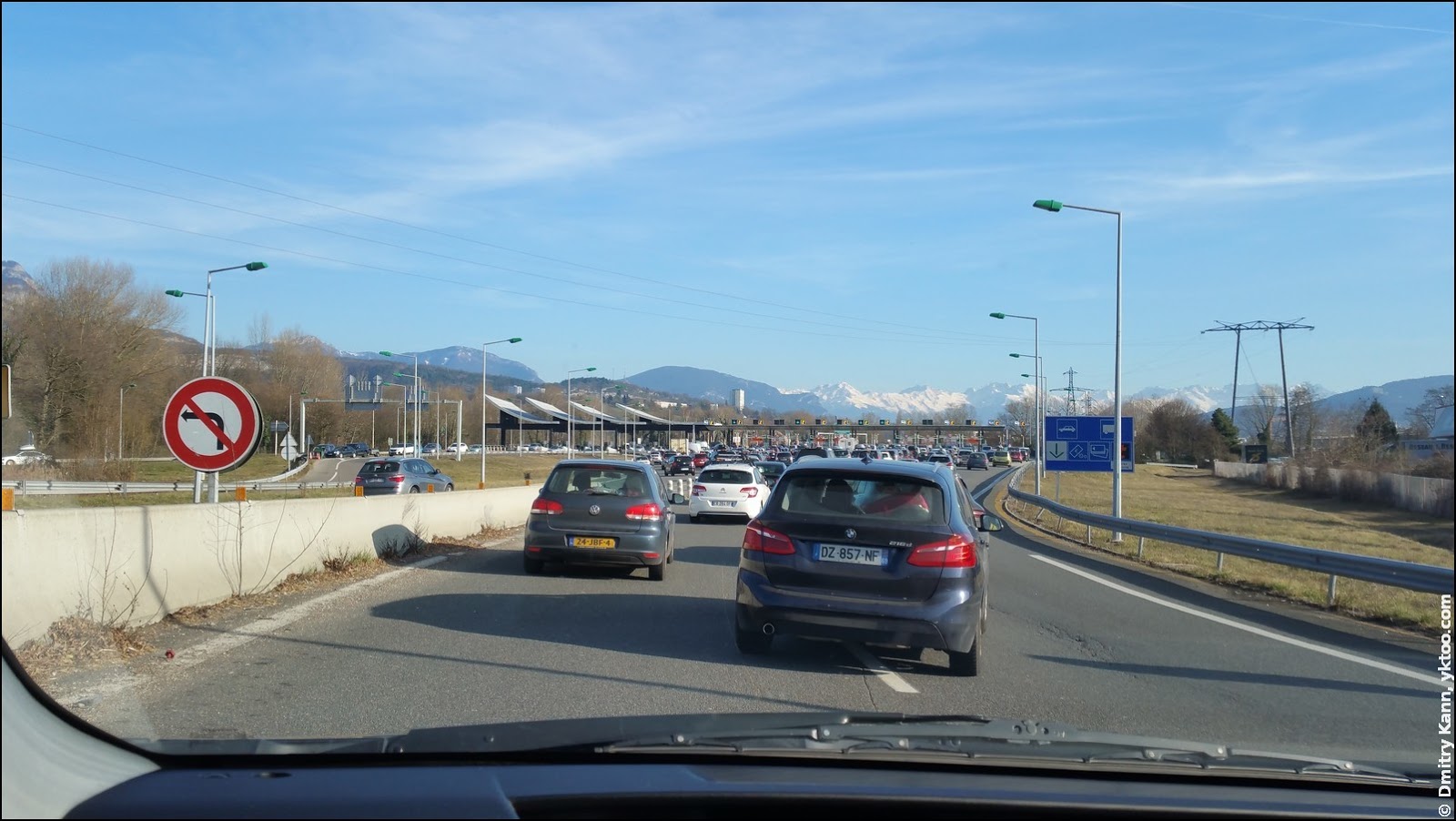
In total we’d lost about an hour at that spot,—all that hassle just to pay a toll of €2.20! The whole amount paid on toll roads in France was some €50 one way.
Les Bottières
We’ve reached Les Bottières shortly before the sunset, which was great, because driving on a windy mountain road in complete darkness is hardly enjoyable. The entire journey took us some twelve hours.
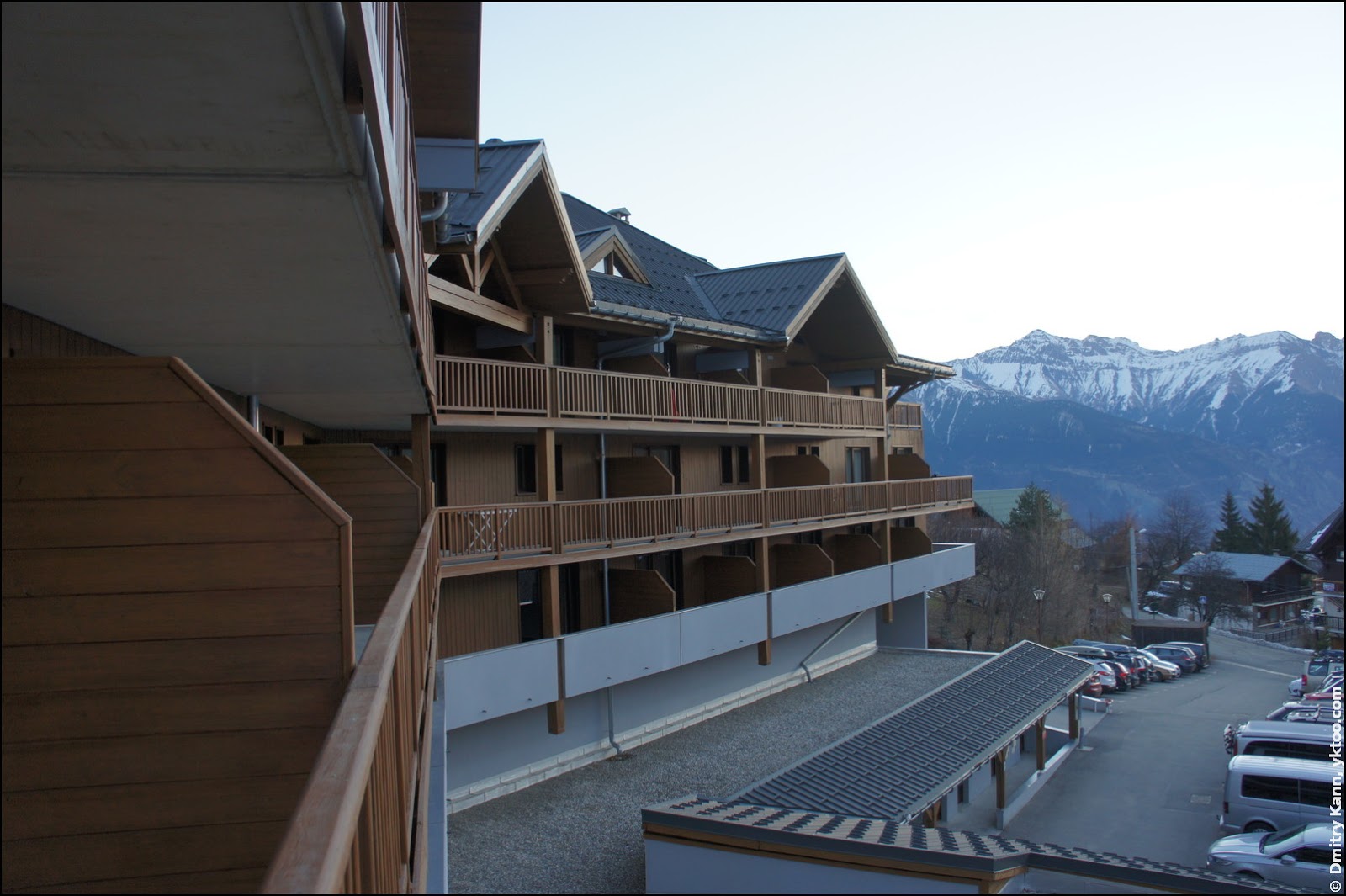
Our hotel was of a miserly sort, with only very basic stuff included. Everything else, like internet access, sauna, TV, even towels and bed linen, had to be paid separately. But that wasn’t even the most worrisome part.
The worst was that there was almost no snow in the village!
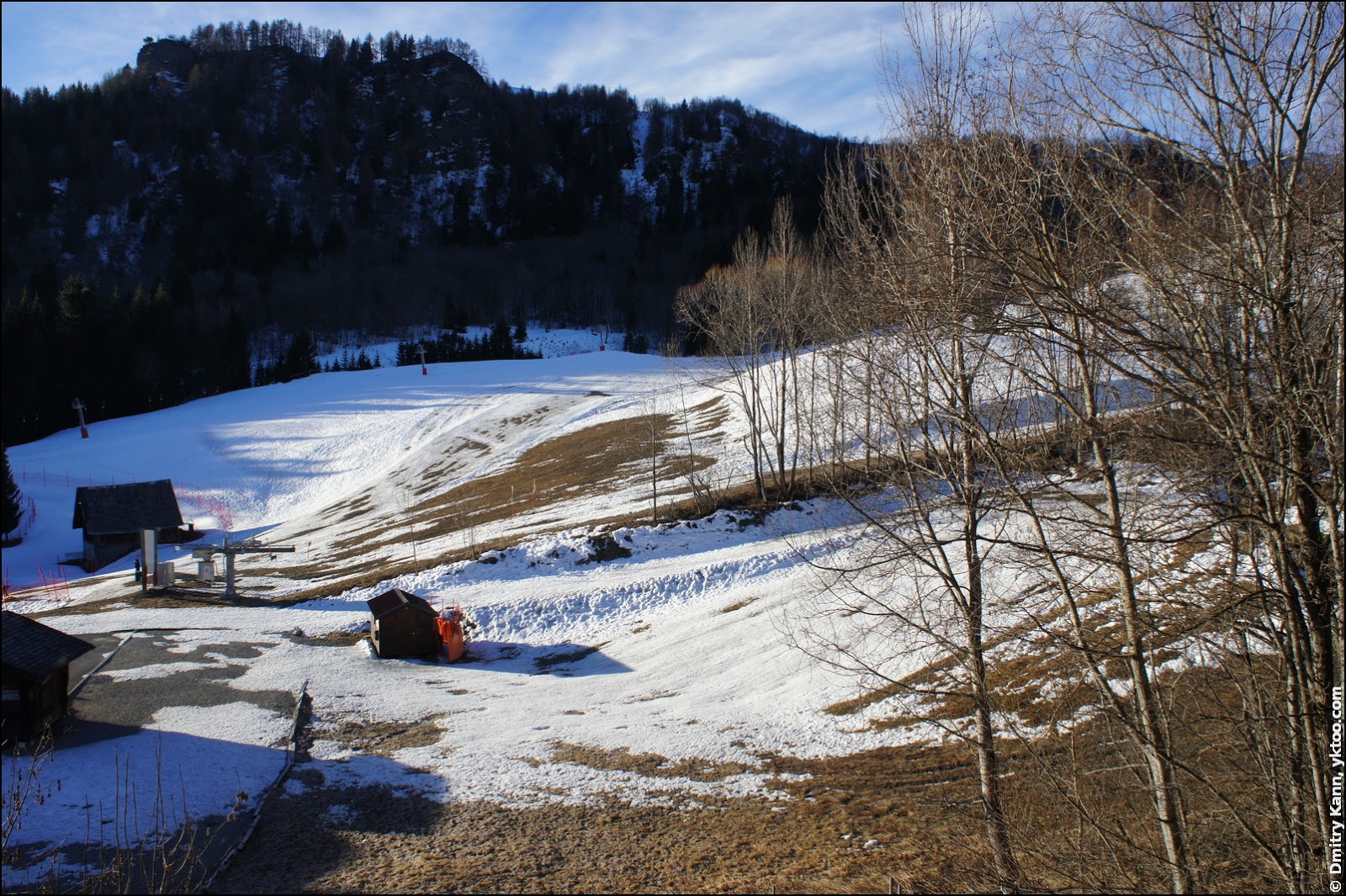
The photo above shows that ski lift 50 metres away. Which is obviously closed because it cannot be operated without snow. That didn’t bode well. What in heaven’s name are we doing here, I was thinking at the sight of the bare ground.
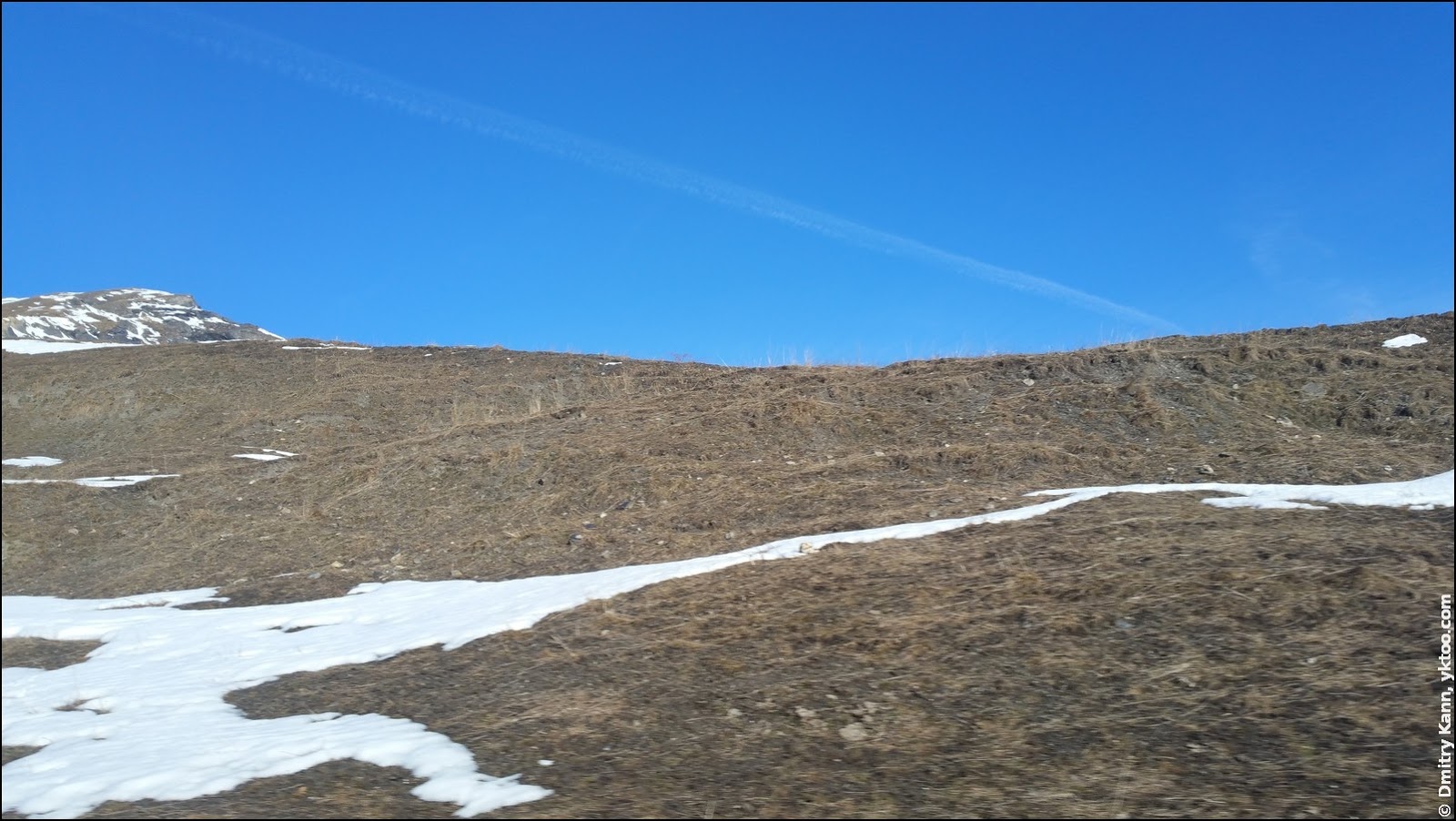
However everything turned out to be quite okay. Les Bottières lay at the altitude 1300 m and indeed had not so much snow, but Le Corbier, which was 250 metres higher (1550 m) had plenty of it. And La Toussuire (1750 m) situated halfway between us and Le Corbier had even more. To compensate for the missing snow, the resort was providing a free shuttle bus service to Le Corbier running up and down three times a day.
But what an irony: instead of fifty metres the nearest ski lift was eight kilometres away from our hotel! Anyway, such things are impossible to plan around.
The sun rose earlier than in our previous visit, around half past seven:
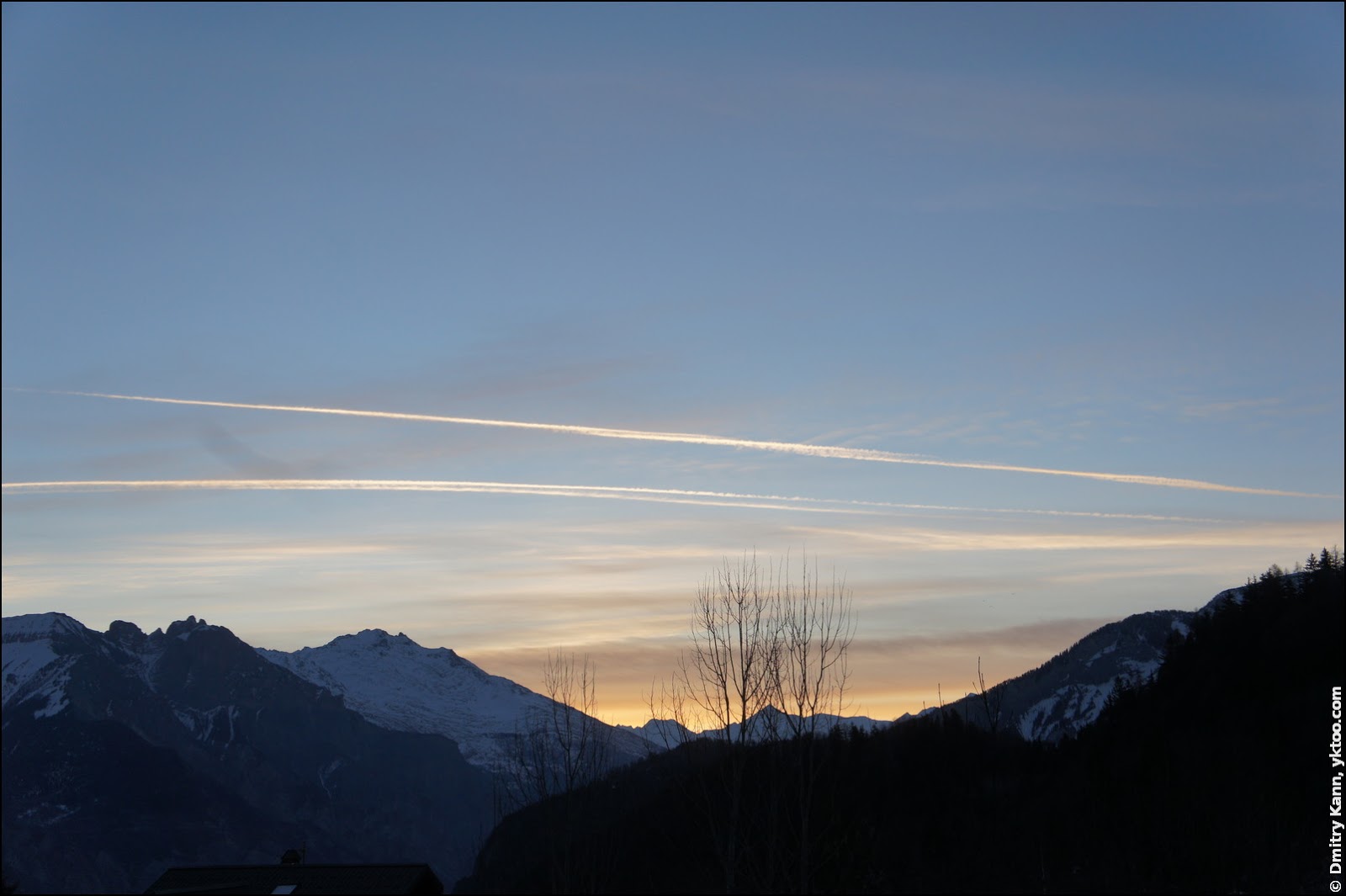
La Toussuire
Did you know that everything hermetically sealed under normal air pressure gets swollen and inflated up in the mountains? The higher, the stronger:
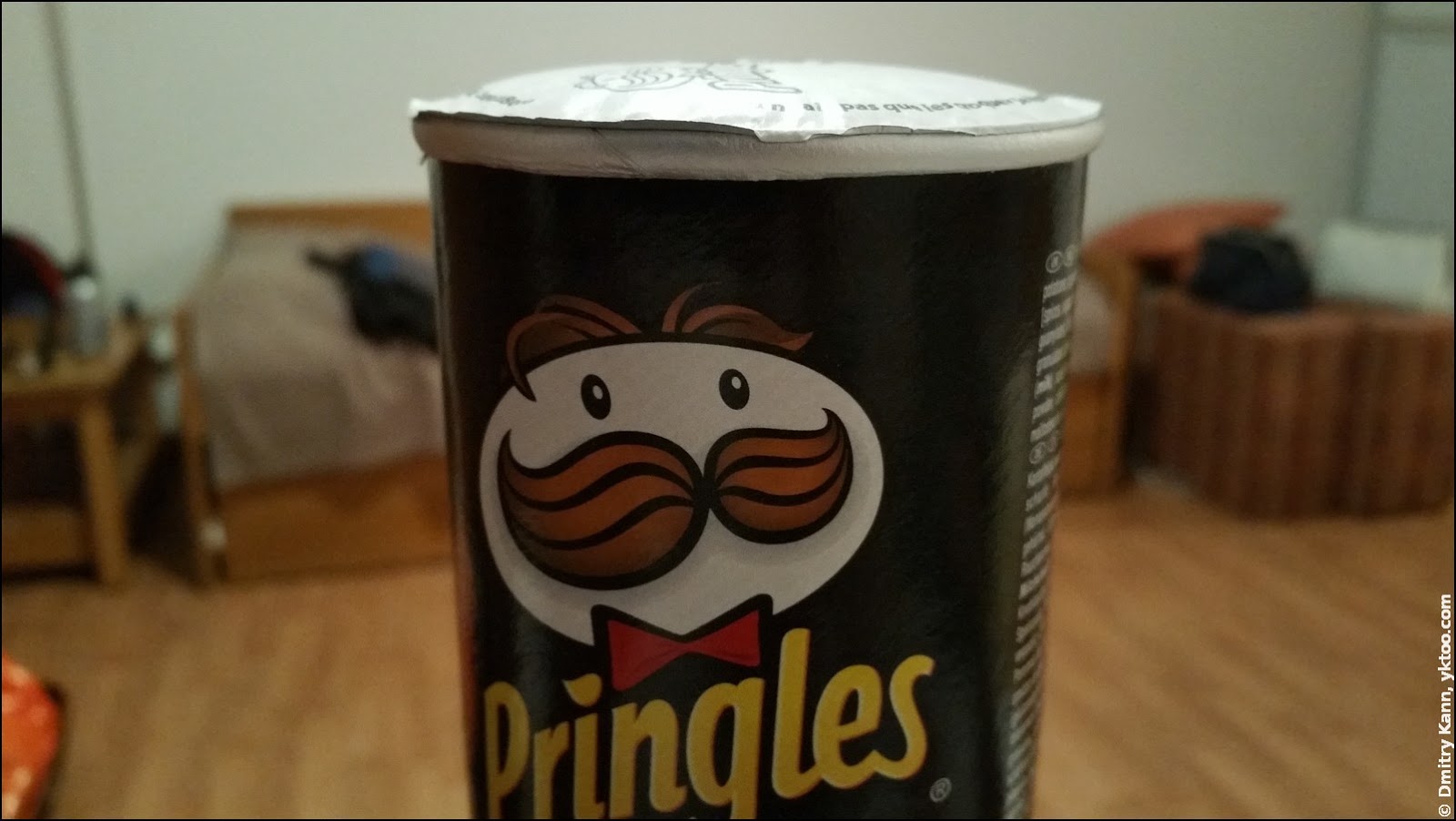
The first couple of days the weather was sunny, exasperatingly sunny, with the air temperature hitting +10-12 °C (50-54 °F) in the shade. Rambling around in a complete winter-sport outfit was a torture at times.
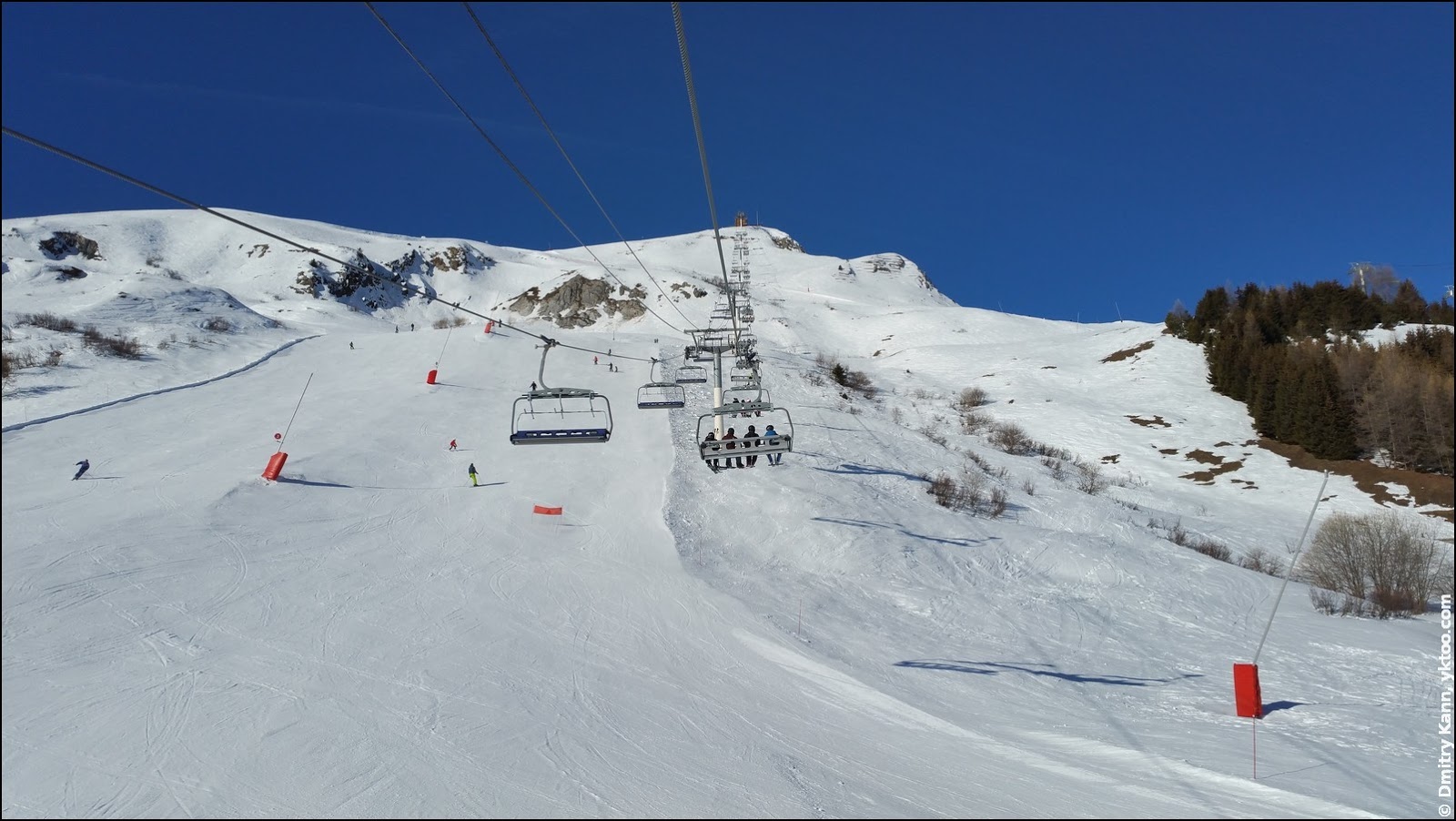
The snow didn’t take it lightly either. I was noticing more and more bare spots and, in contrast with La Plagne, I’ve never seen the snow guns working here.

The lack of snow caused numerous piste closures, like those leading to Les Bottières I mentioned above. Such things were, as usual, presented on interactive ski maps installed in the most popular places.
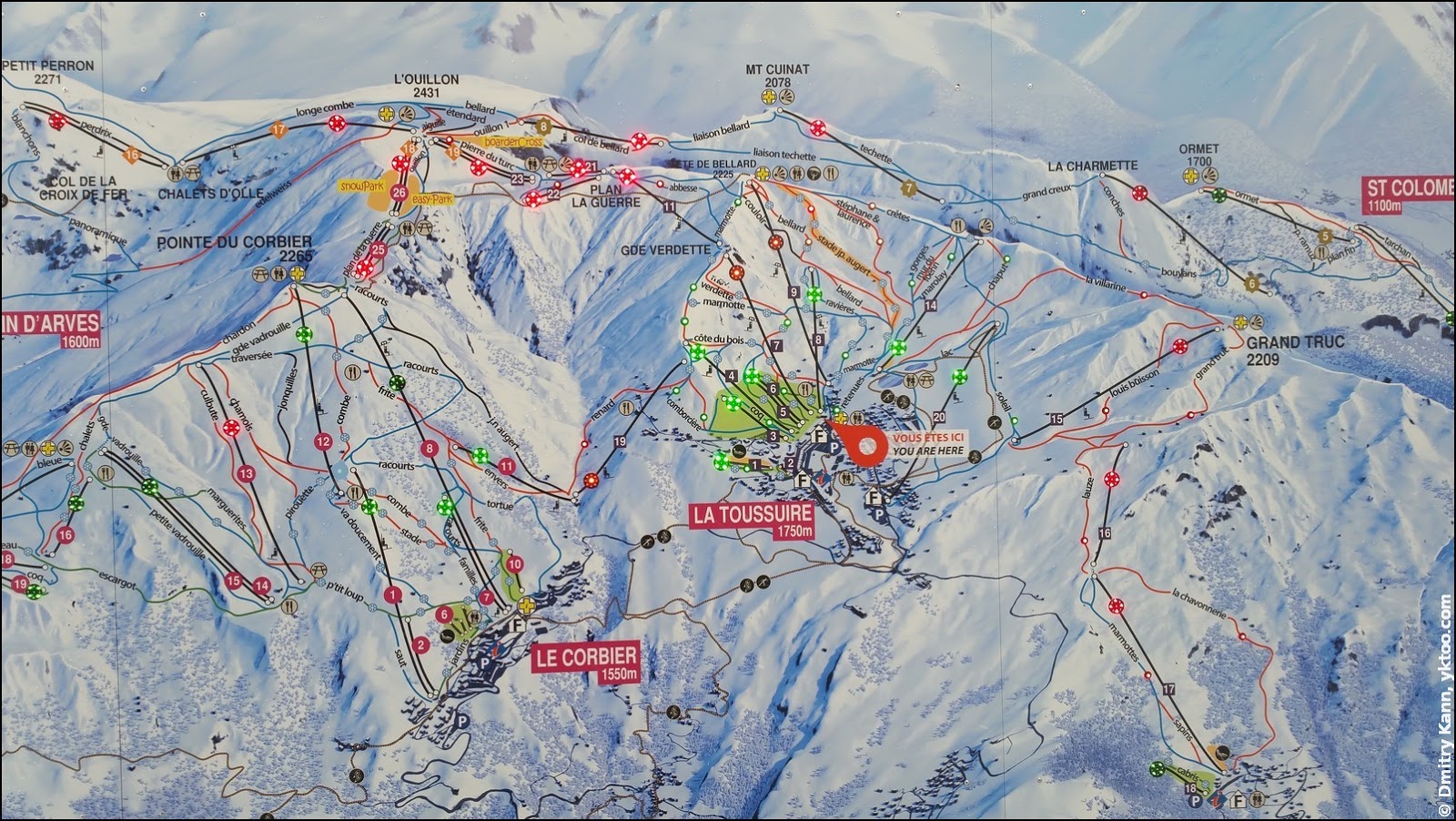
Looking at the slowly thawing snow I kept asked myself how our next days will look like.
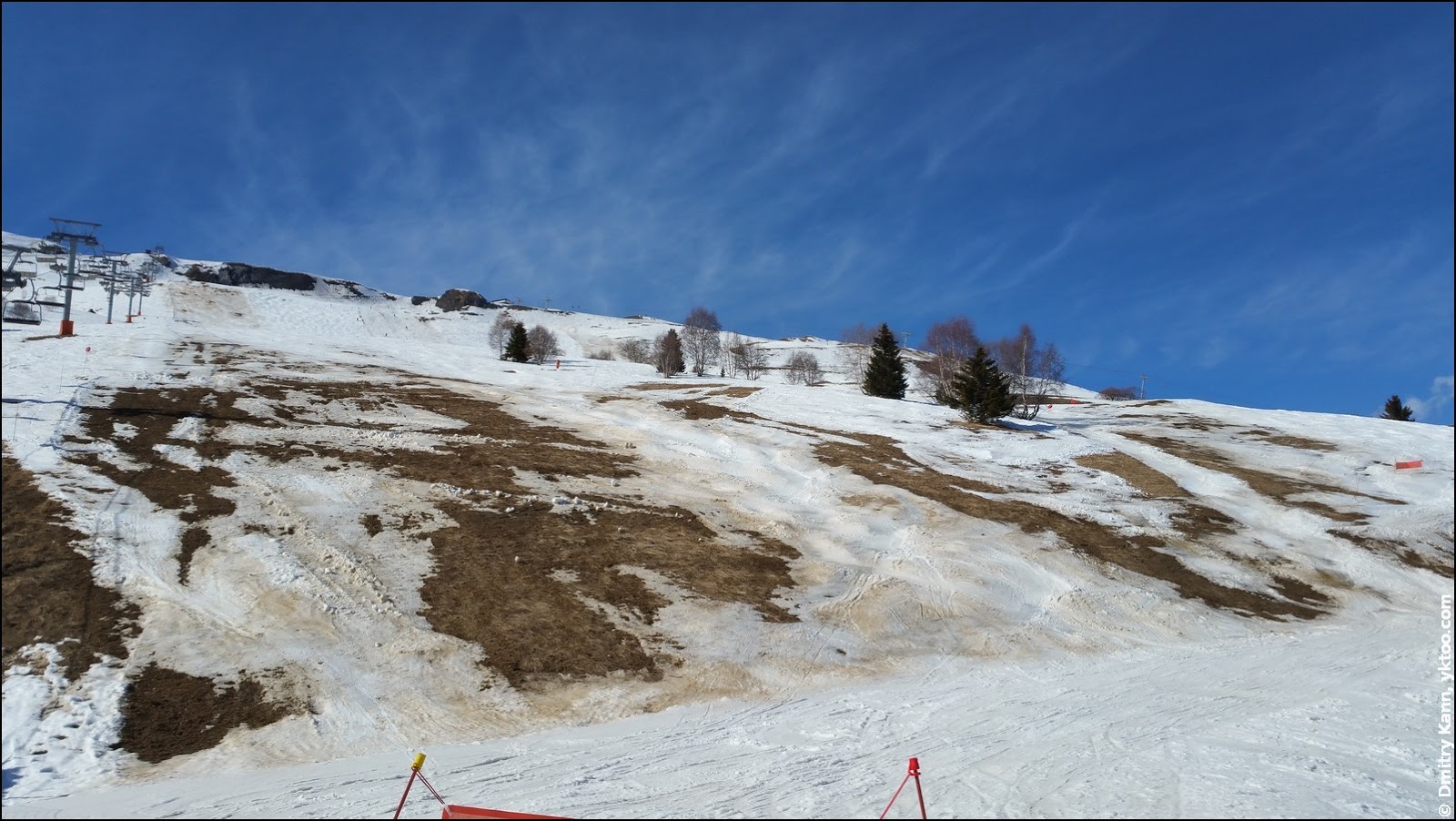
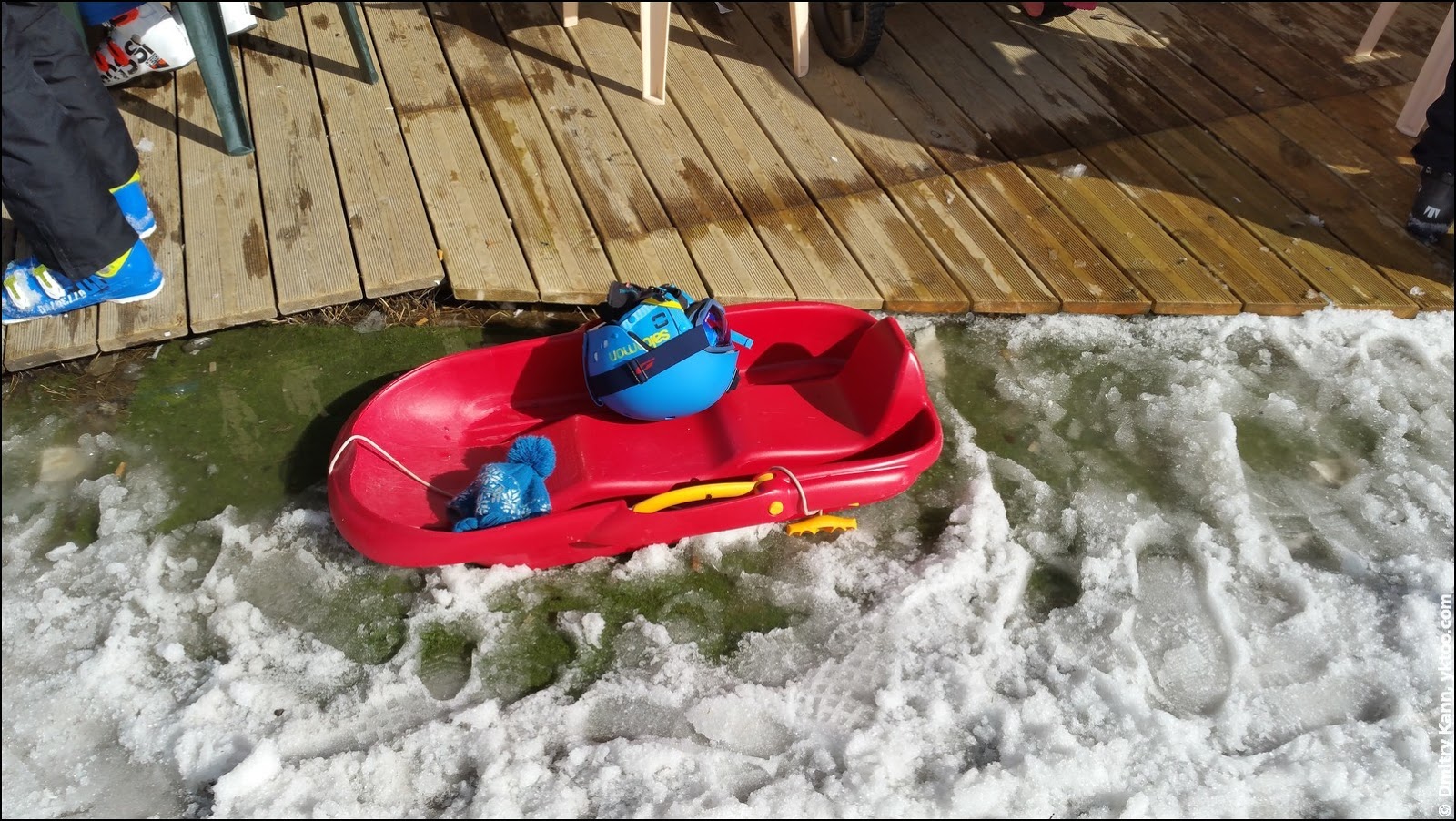
Another annoying thing about good weather were crowded slopes and ski lifts. Sometimes we had to spend a quarter of an hour standing in line before the ski lift.
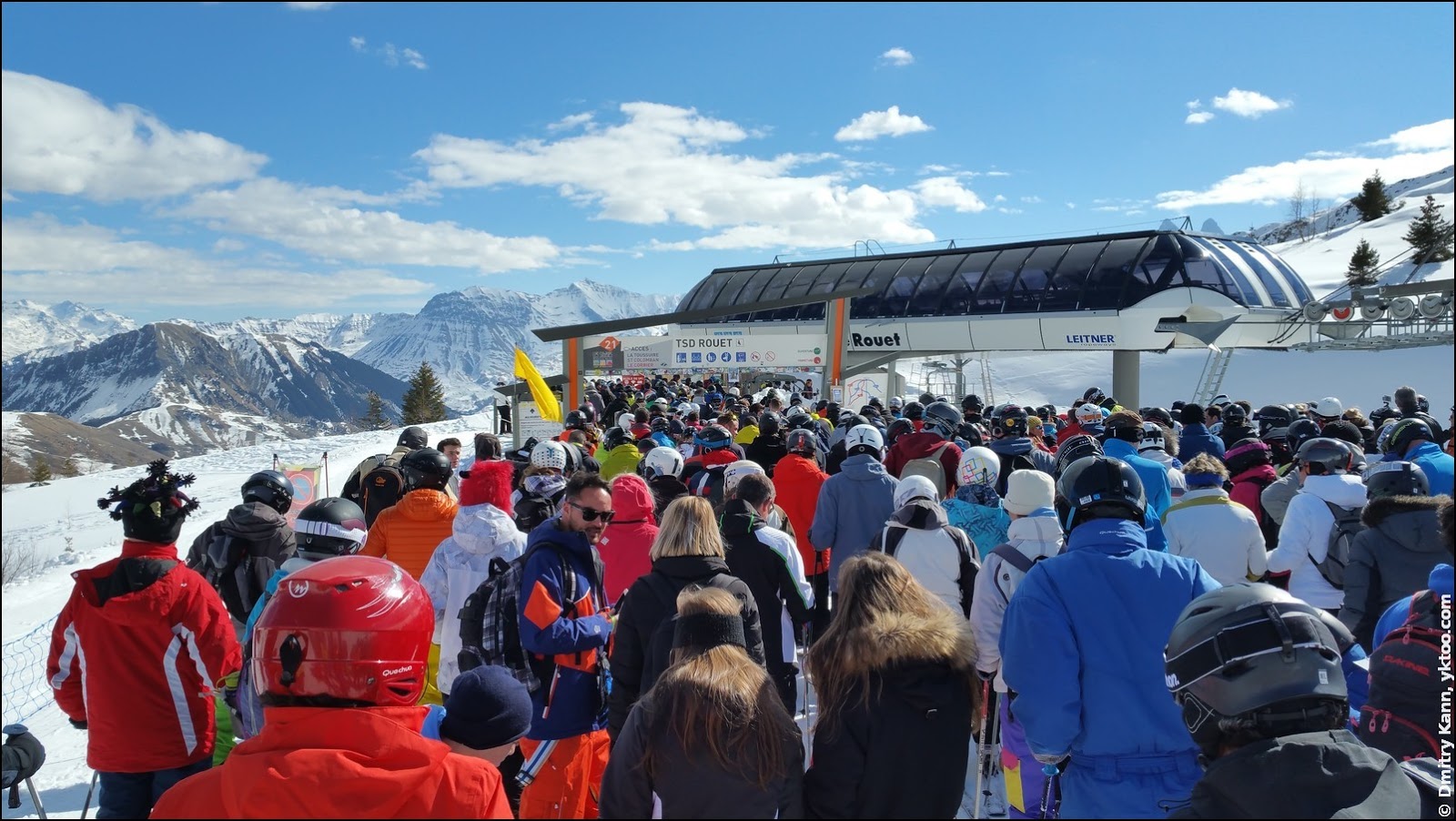
But despite the bright blue sky and the sun, fiercely shining on us at this altitude, the weather forecast predicted a heavy snowfall on the third day. And—you won’t believe it—the forecast came true! That day, February 28th, began with cloudy sky, mist and drizzle.
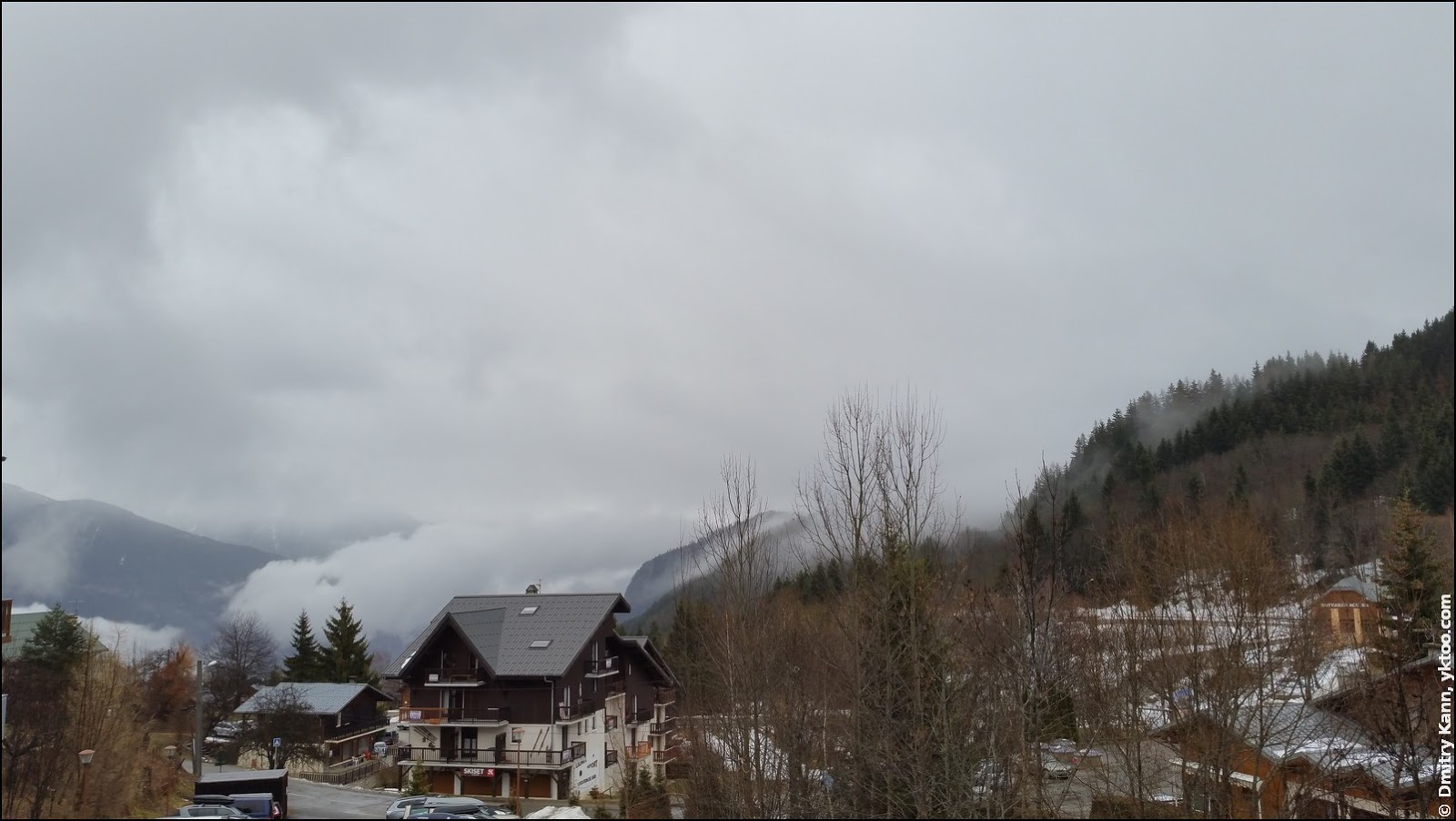
We wouldn’t take the free shuttle anymore and would prefer driving to La Toussuire to enjoy the full mobility.
Higher in the mountains the fog was so thick that the visibility plunged to some 200 metres:
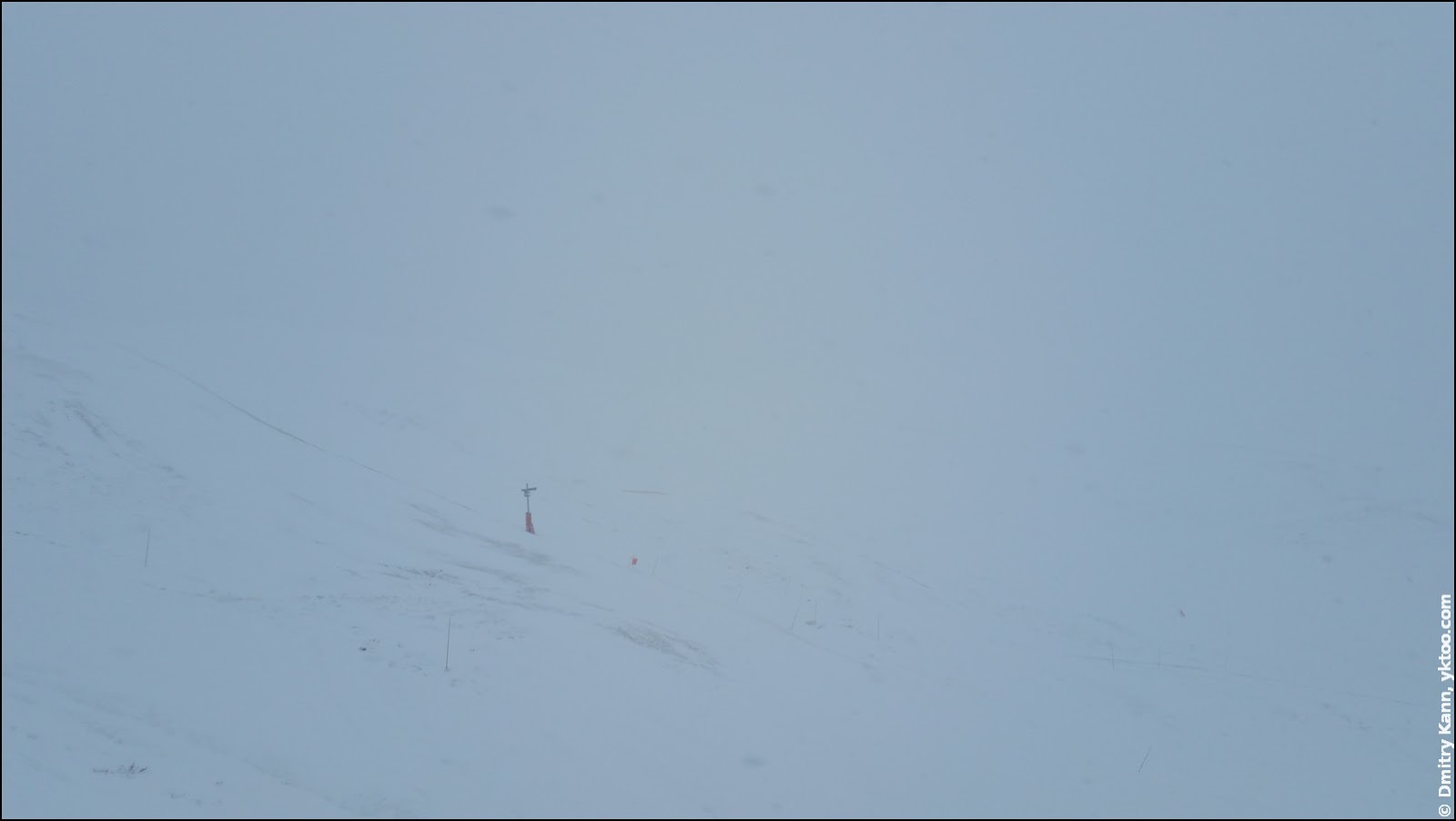
The sun was finally gone and that considerably spiced up our snowboarding. Meanwhile the wind grew harder, it finally started snowing. Because of all this La Toussuire had closed all ski lifts above the 2000 m mark in the afternoon. The upside was, though, that almost everyone was gone by that time.
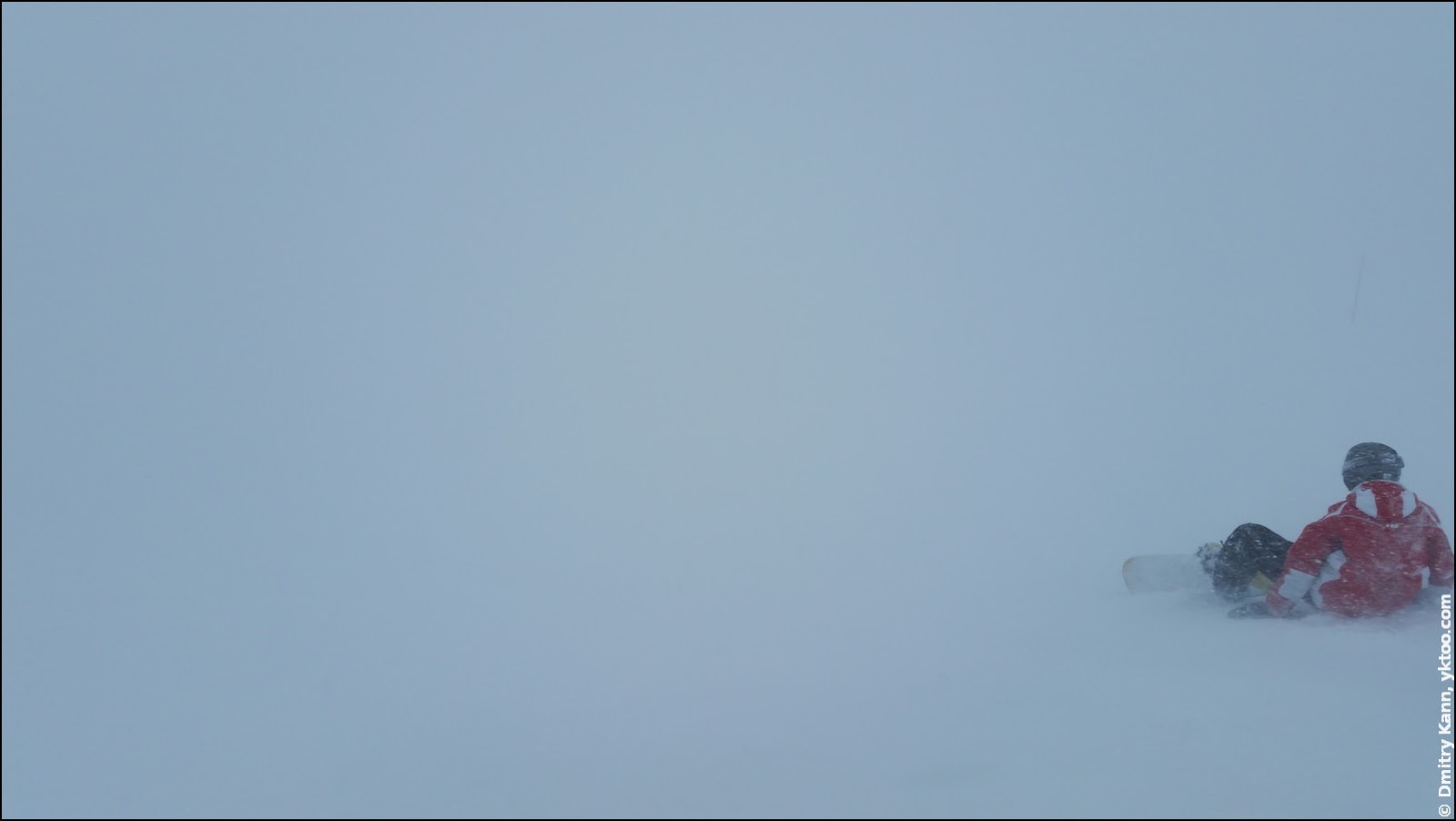
We didn’t like the idea of going down the same couple of short slopes all the time, so we jumped into our car and drove further along, to Le Corbier , which still had most of its lifts running.
Le Corbier
Snowboarding in Le Corbier was already challenging, and a couple of hours later a real snow storm began.
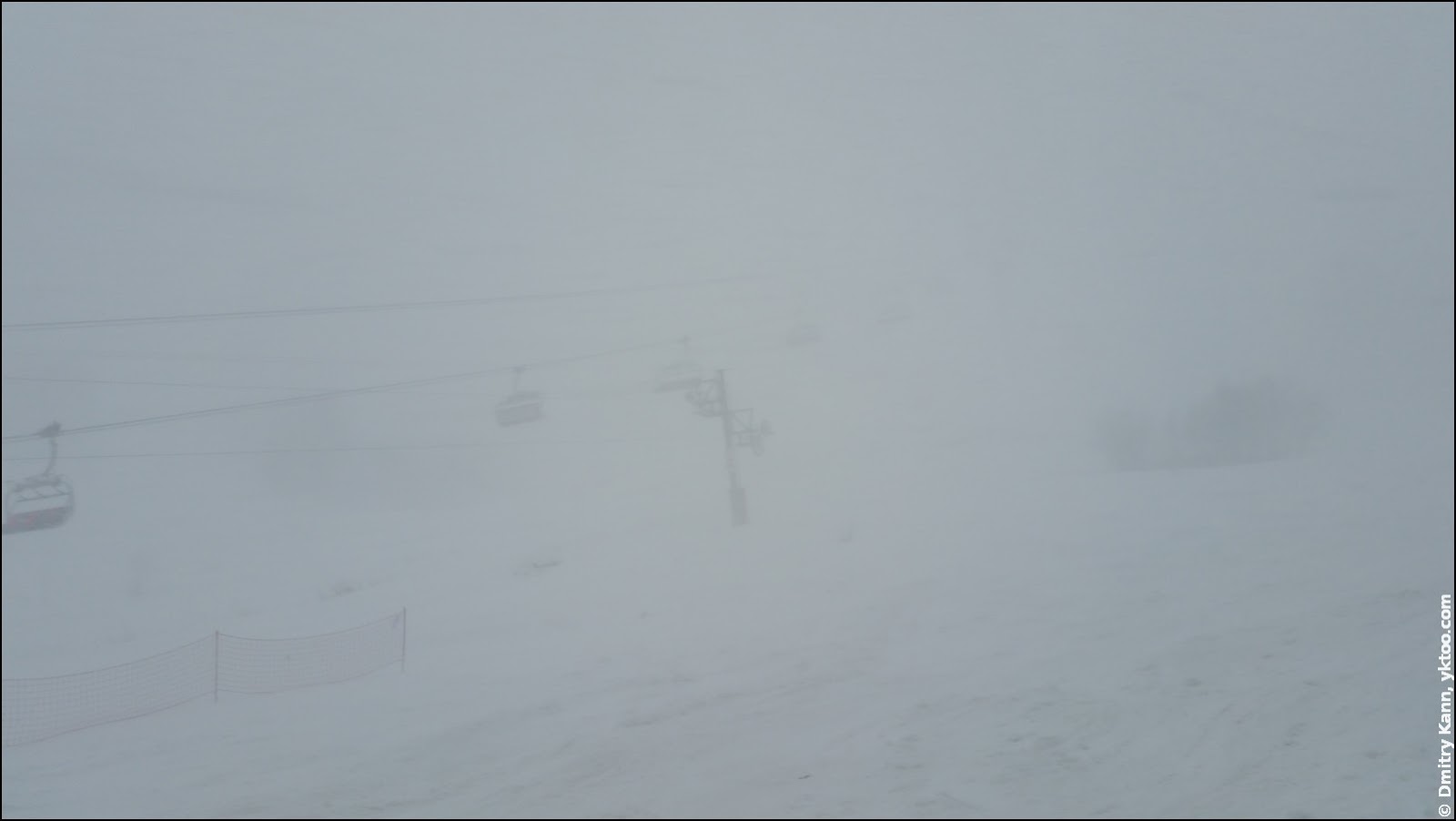
The slopes were almost deserted, save for ourselves and a few groups of kids taking skiing lessons. I wondered how the kids could stand the stormwind and the snow, which felt like thorns on my face.
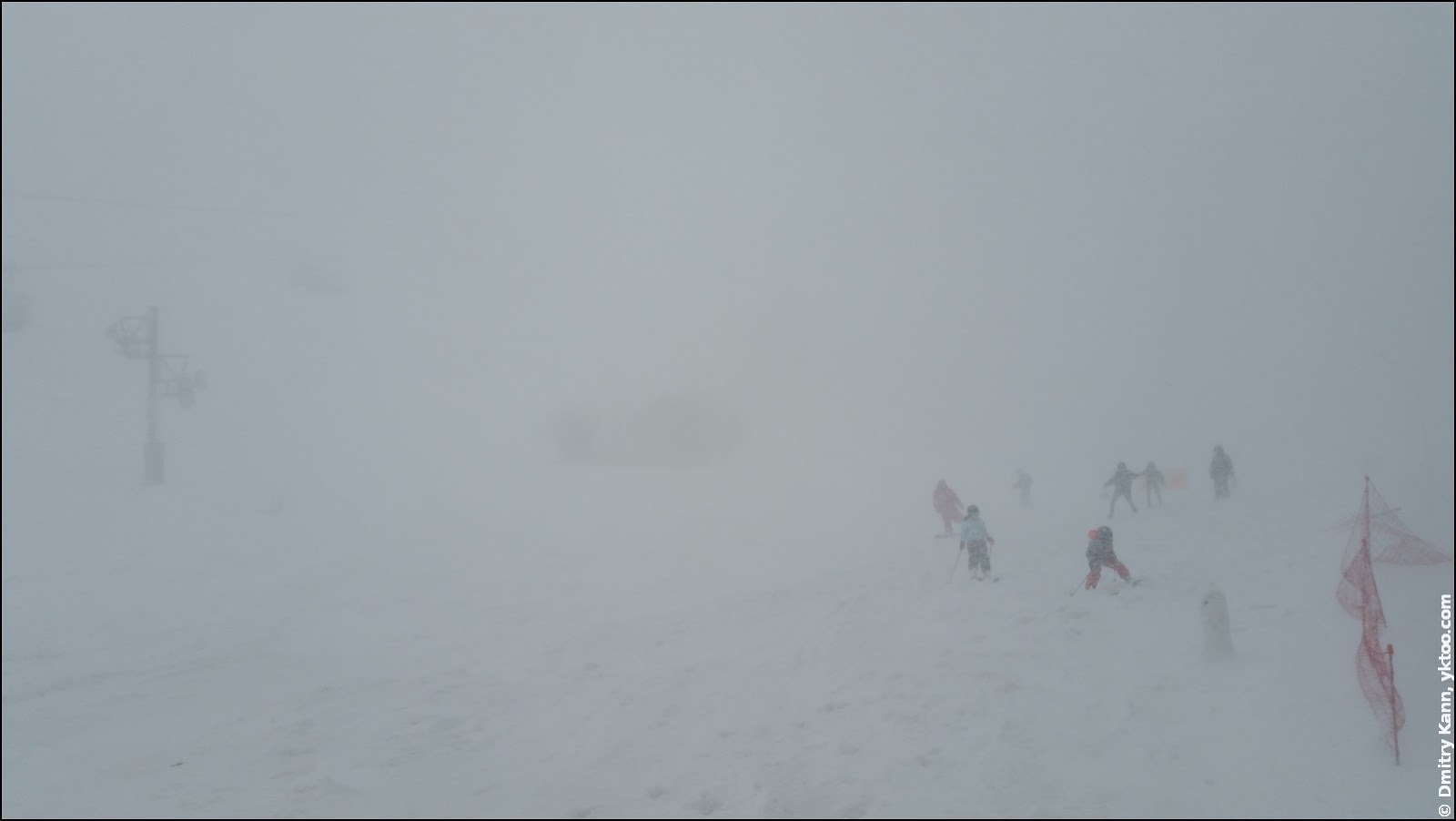
At the top of the mountain one could barely see anything in twenty metres, so it was pretty much “blind snowboarding.” It was scary and funny at the same time. The only visual reference we had were plastic rods along the piste’s edges, but otherwise it didn’t really matter which direction you’d take as a solid white shroud hung all around. Once I was descending and suddenly lost my balance and sat down on the snow. Then I realised it happened because I’d stopped but couldn’t feel it. That was hilarious.
Why we have been so persistent? Because I knew: once one can control the snowboard in such circumstances, anything else will be a piece of cake.
Eventually Le Corbier also closed all the lifts—an hour before the day’s end—because the crazy gale made it difficult even to stand still.
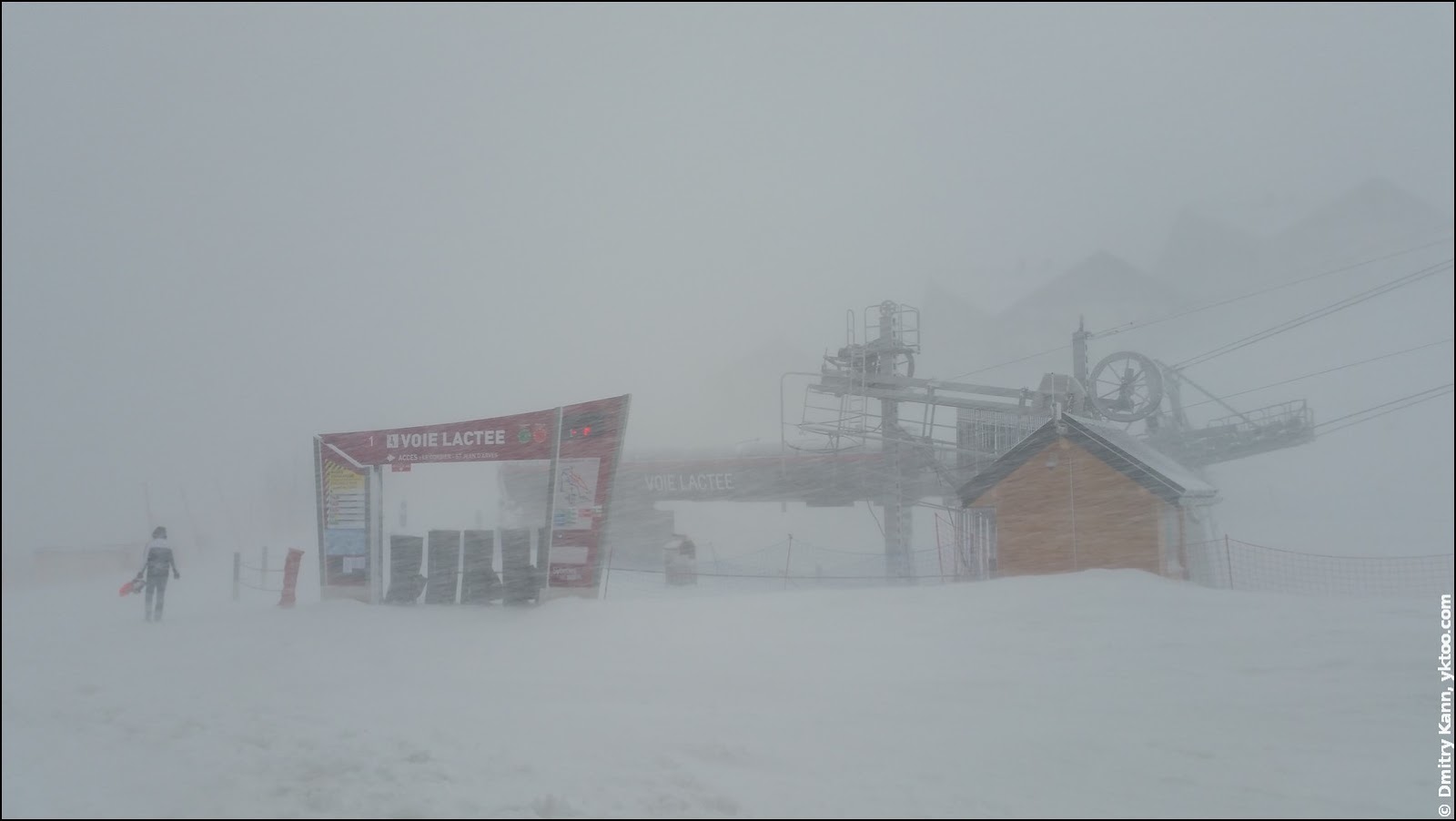
We pushed our way against the wind back to our car.
The whole parking lot was covered with thick snow. We quickly brushed the snow off the car and tried to drive out, but the wheels would slip. At that instant I blessed the moment I’d decided to buy snow chains. With them fitted driving was really easy.
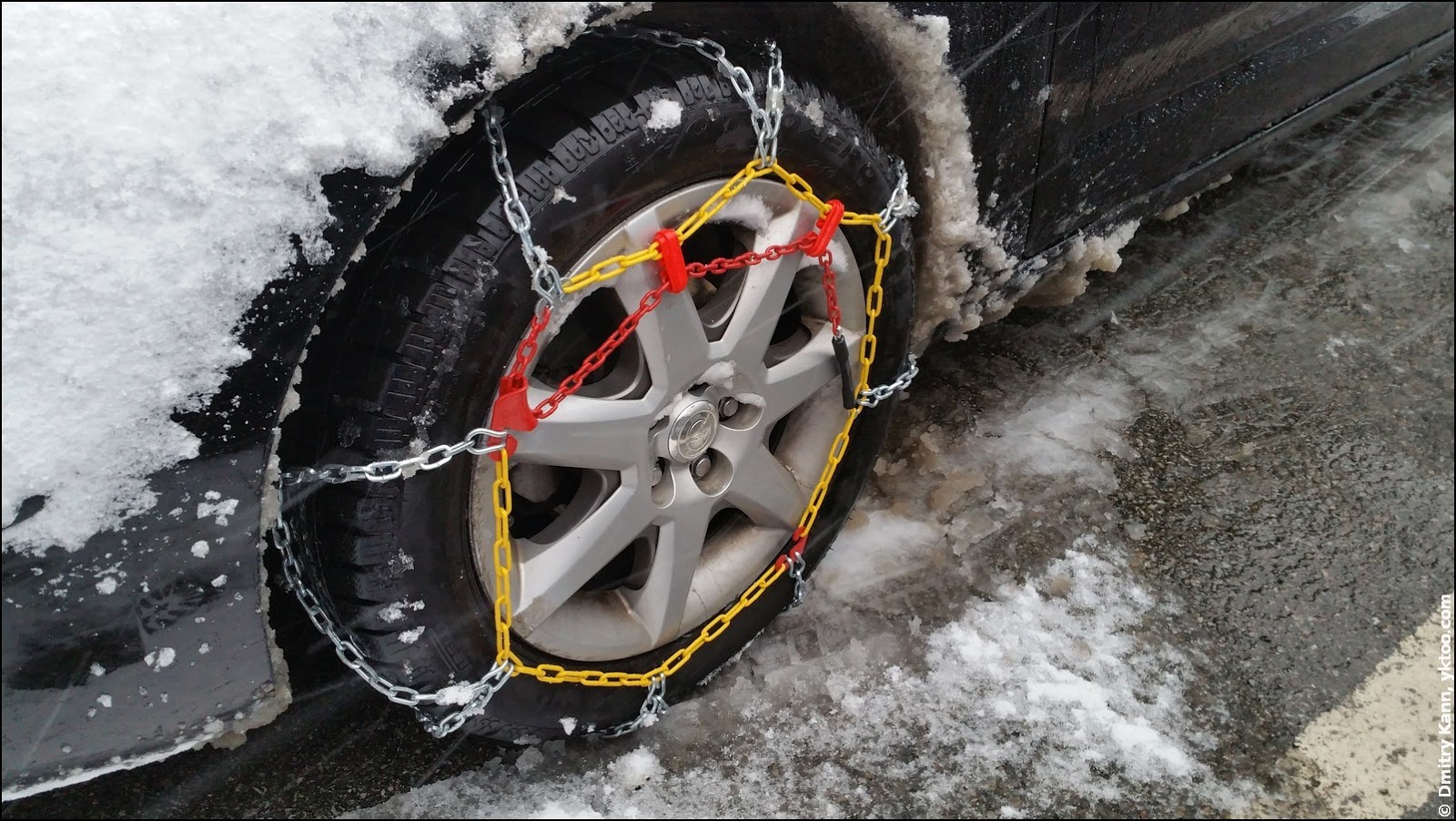
Snow!
The next morning, March 1st, the view from our balcony was totally different. There was plenty of snow even under our ski lift:
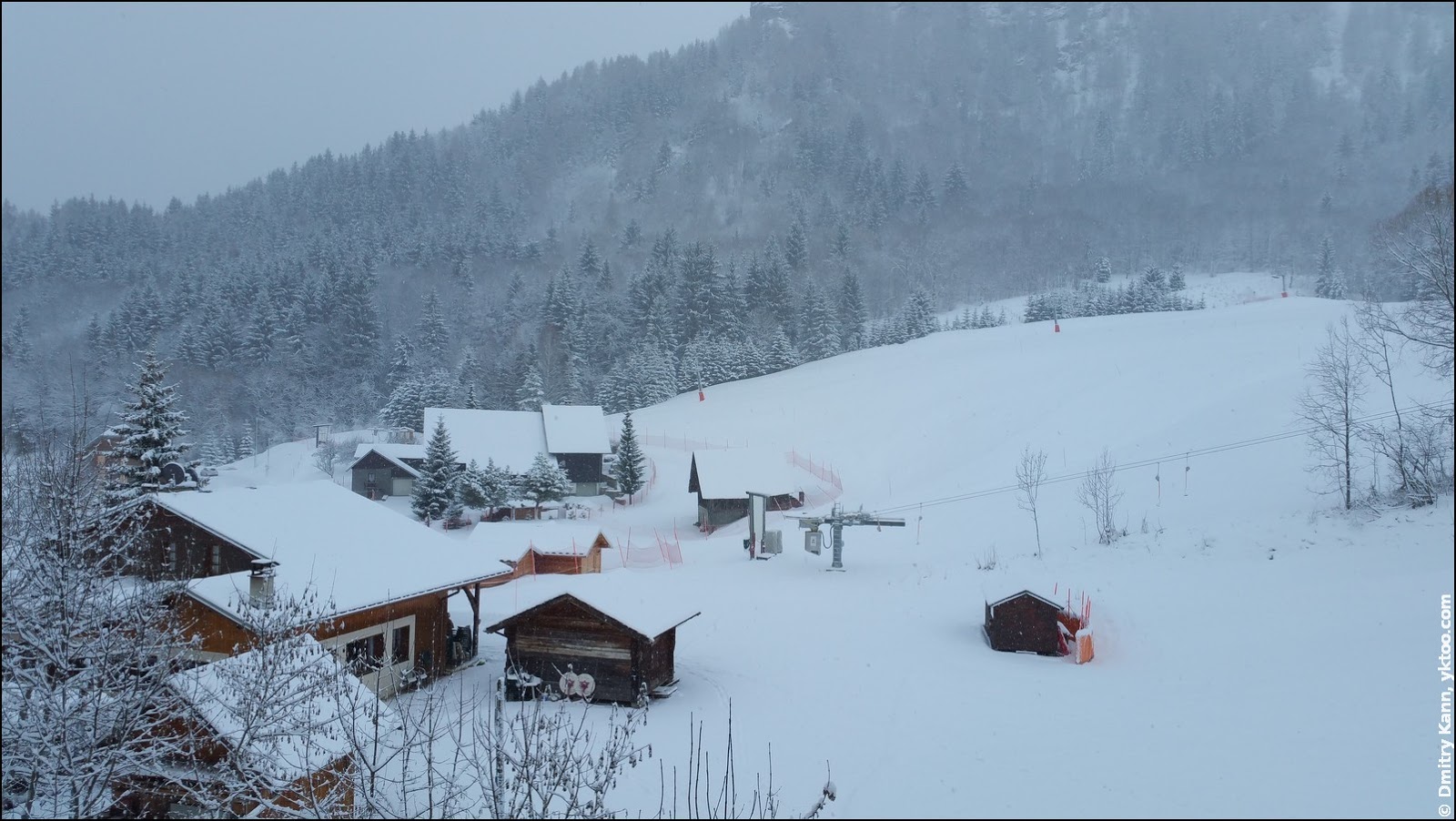
We expected naïvely that the lift would finally run, but it would happen neither on that day nor any day later. I reckon they simply wouldn’t want to take that effort considering the upcoming spring.
It snowed all night long and then another half day, with a total of half-metre fallen snow.
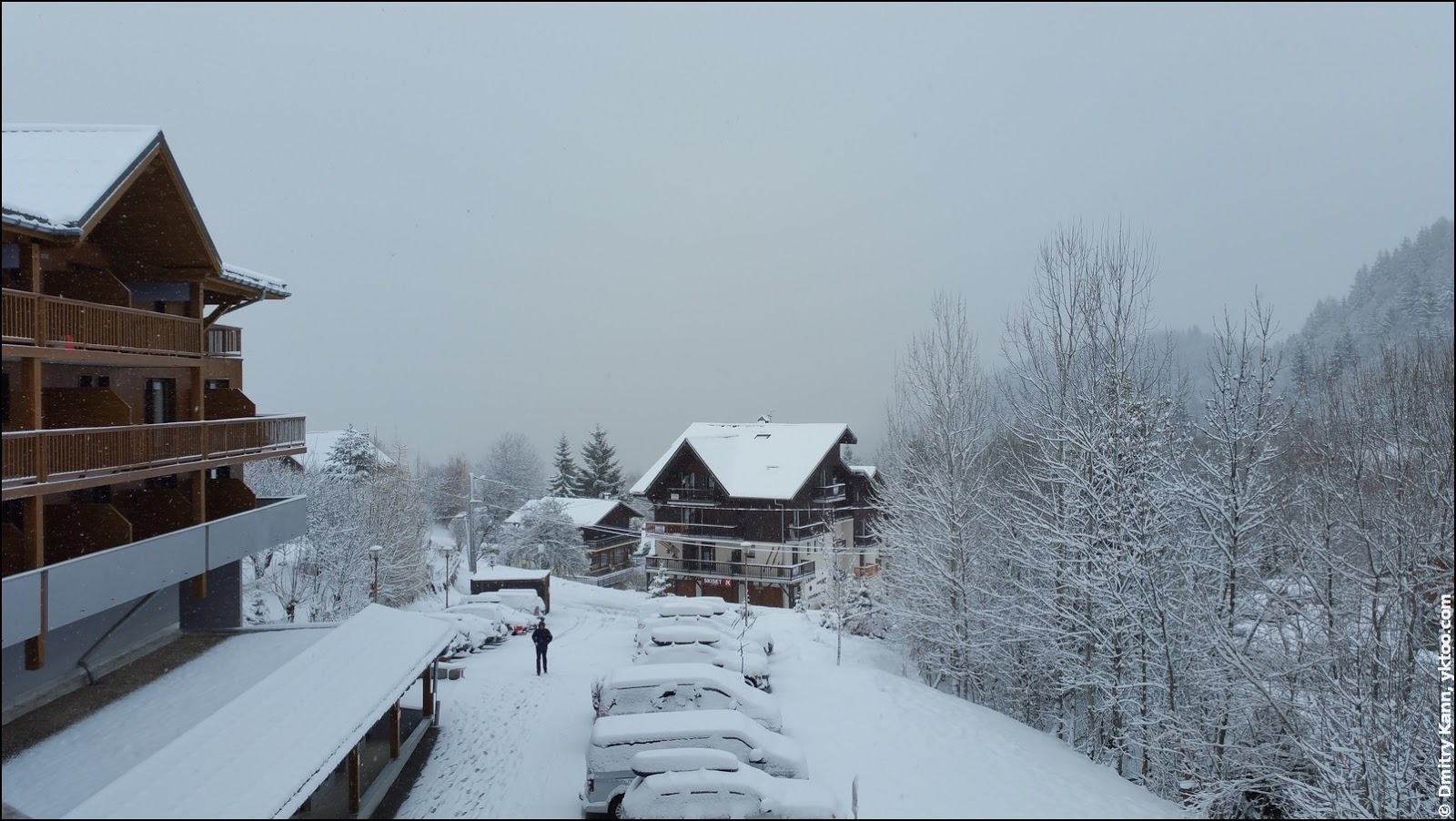
All this snow lay virtually untouched in La Toussuire . I have the impression no one really cared for snow in Les Sybelles : snow guns were never used, bare spots and pits never healed, slopes never groomed with ratracs. Which was in stark contrast with La Plagne. Instead of all that the pistes would simply get closed by the means of a banner across the slope.
Anyway, that day we enjoyed lots of off-piste snowboarding on the soft ungroomed snow powder. Which didn’t differ that much from the “groomed” one.
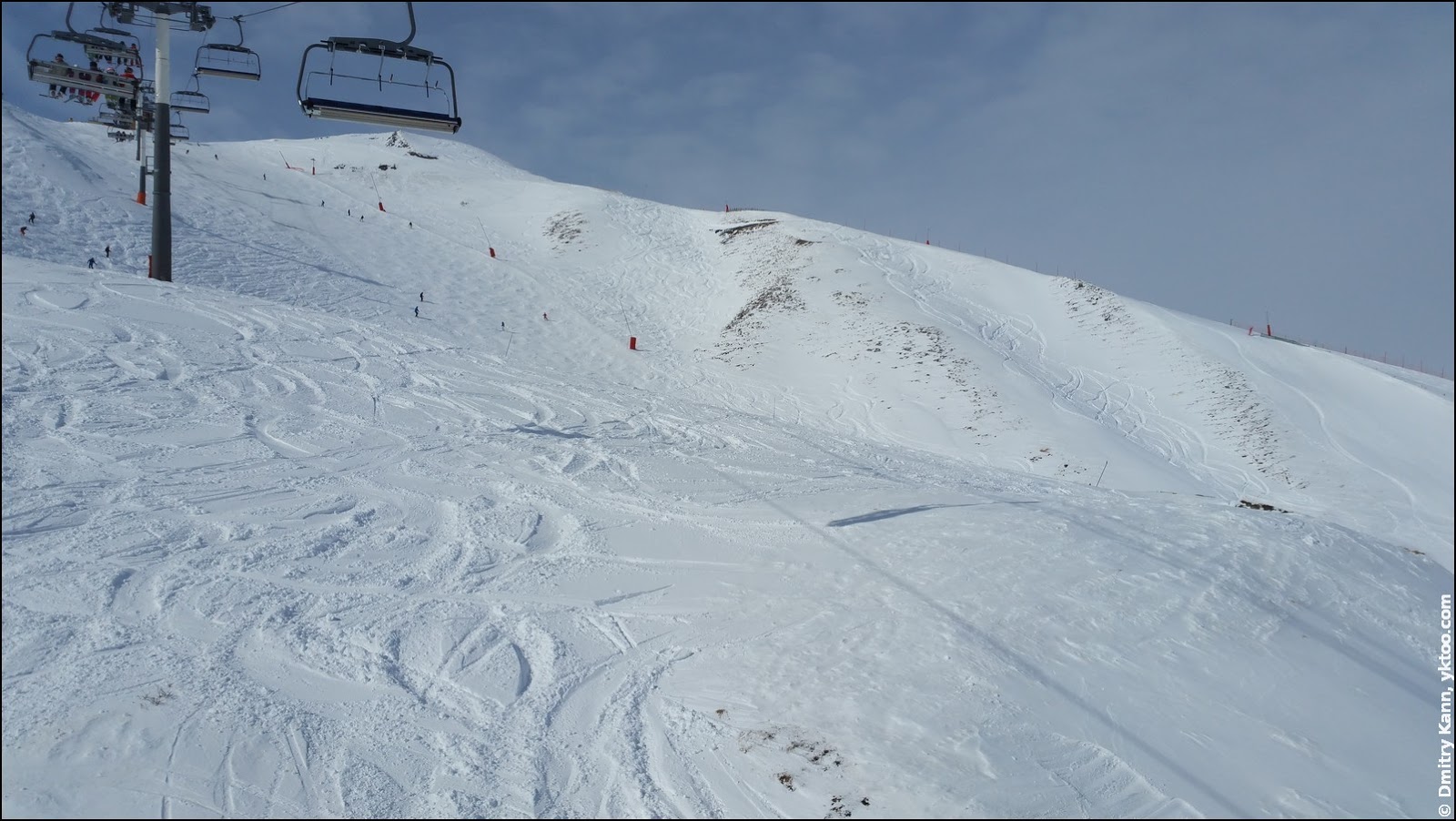
That was awesome. As I discovered, the snowboard can easily slide on deep, soft snow, swiftly picking up speed on a decline. The most important in off-piste snowboarding is to avoid falling, because standing back up might be quite challenging.
Unfortunately the snow wouldn’t stay soft for long with that weather. The next day it got crusted all over, which made off-piste snowboarding somewhat unpleasant.
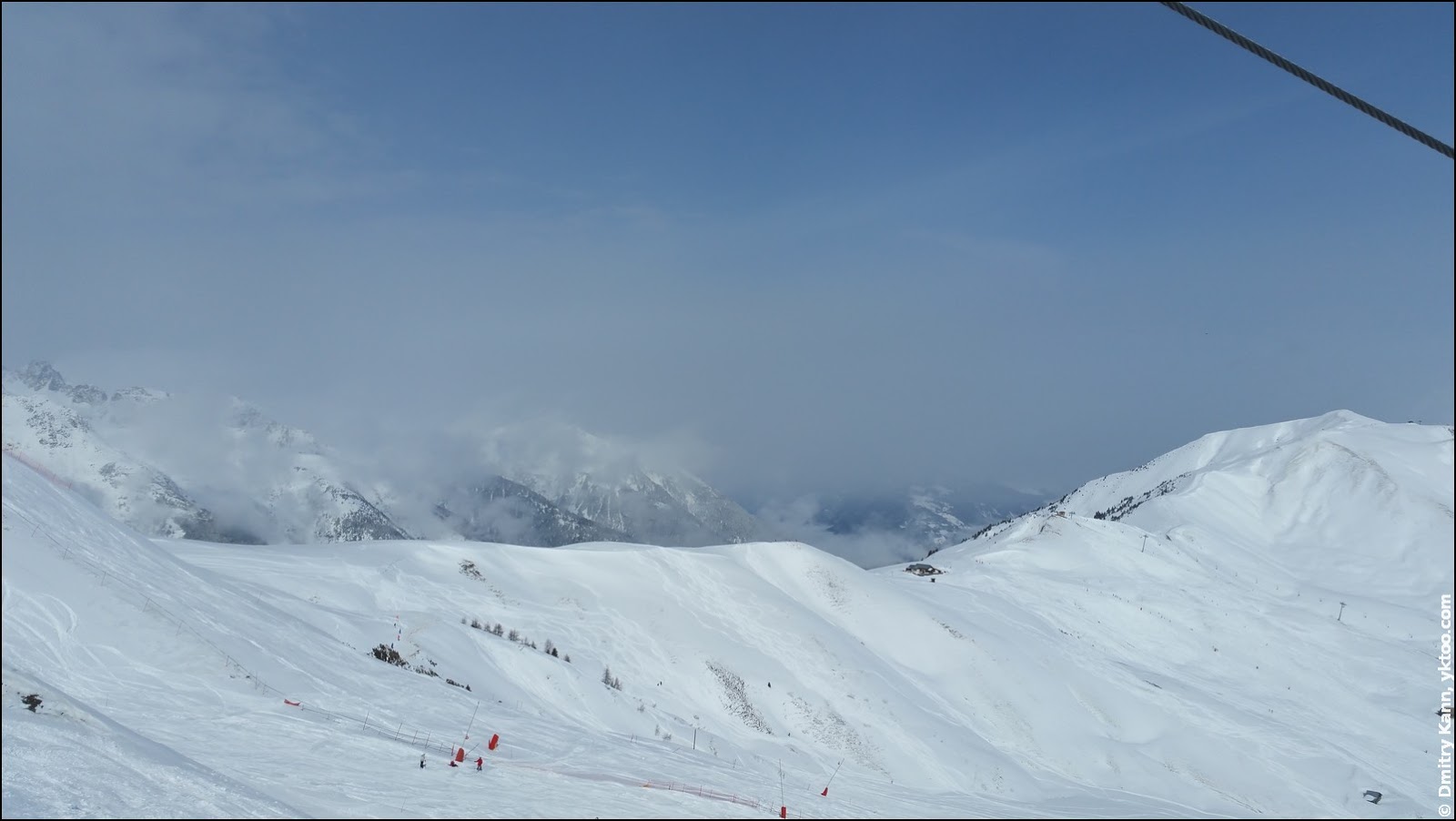
Also that morning has seen a thick fog. Below in Le Corbier it was swirling in small wreaths.
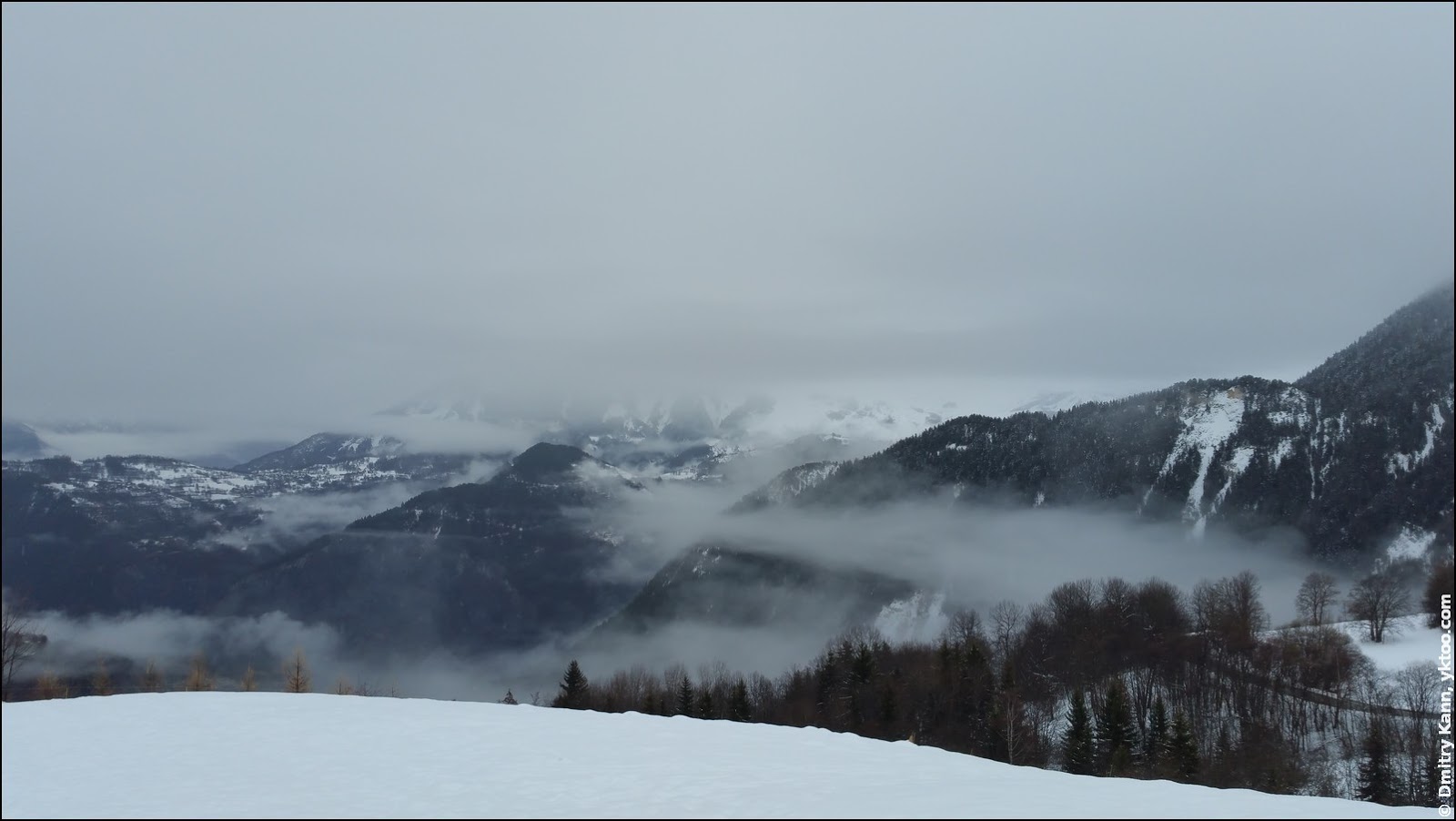
And higher up it got almost opaque. Then our storm-boarding lessons came in handy.
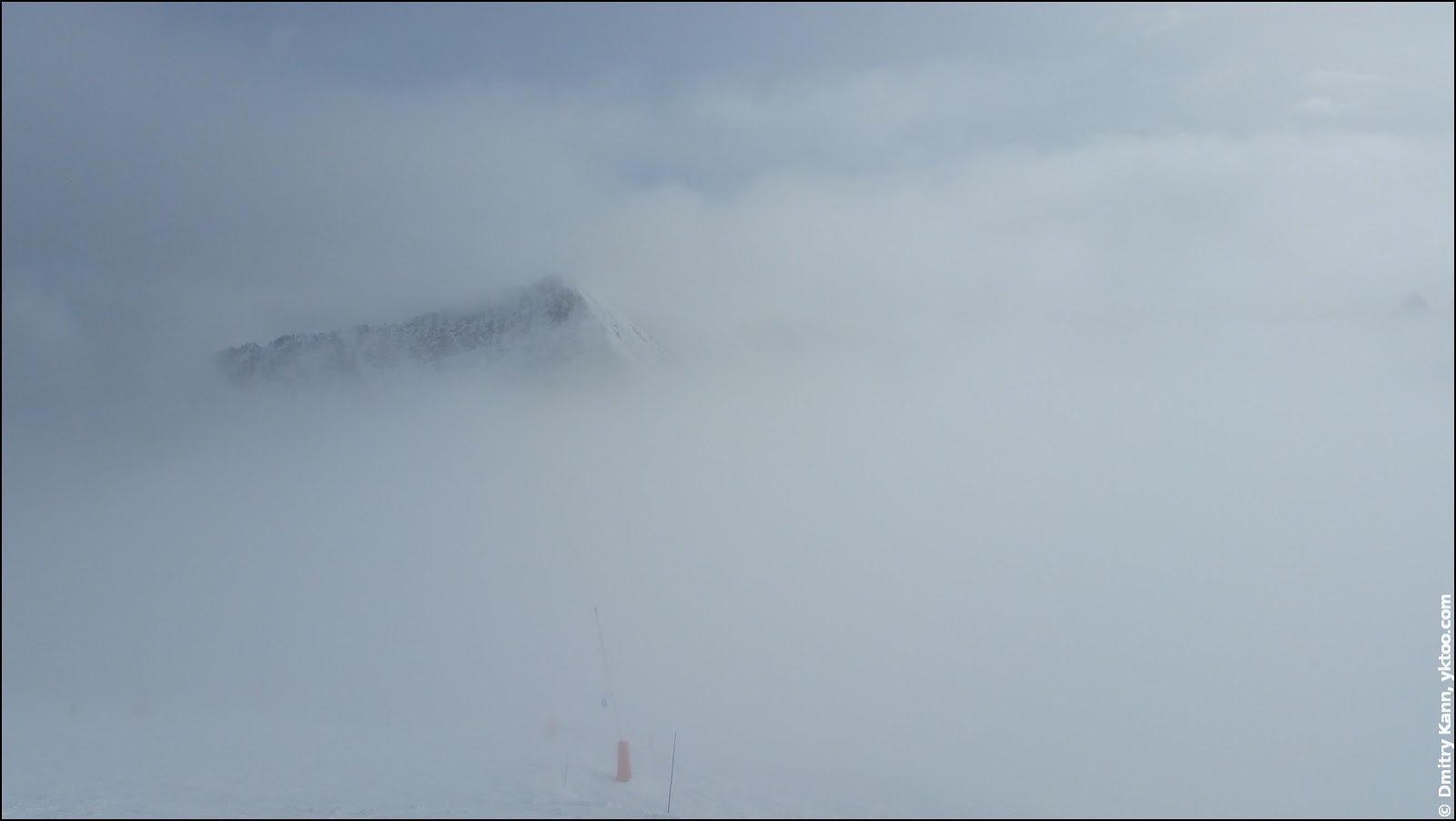
But it was much easier this time because we could at least see the snow below.
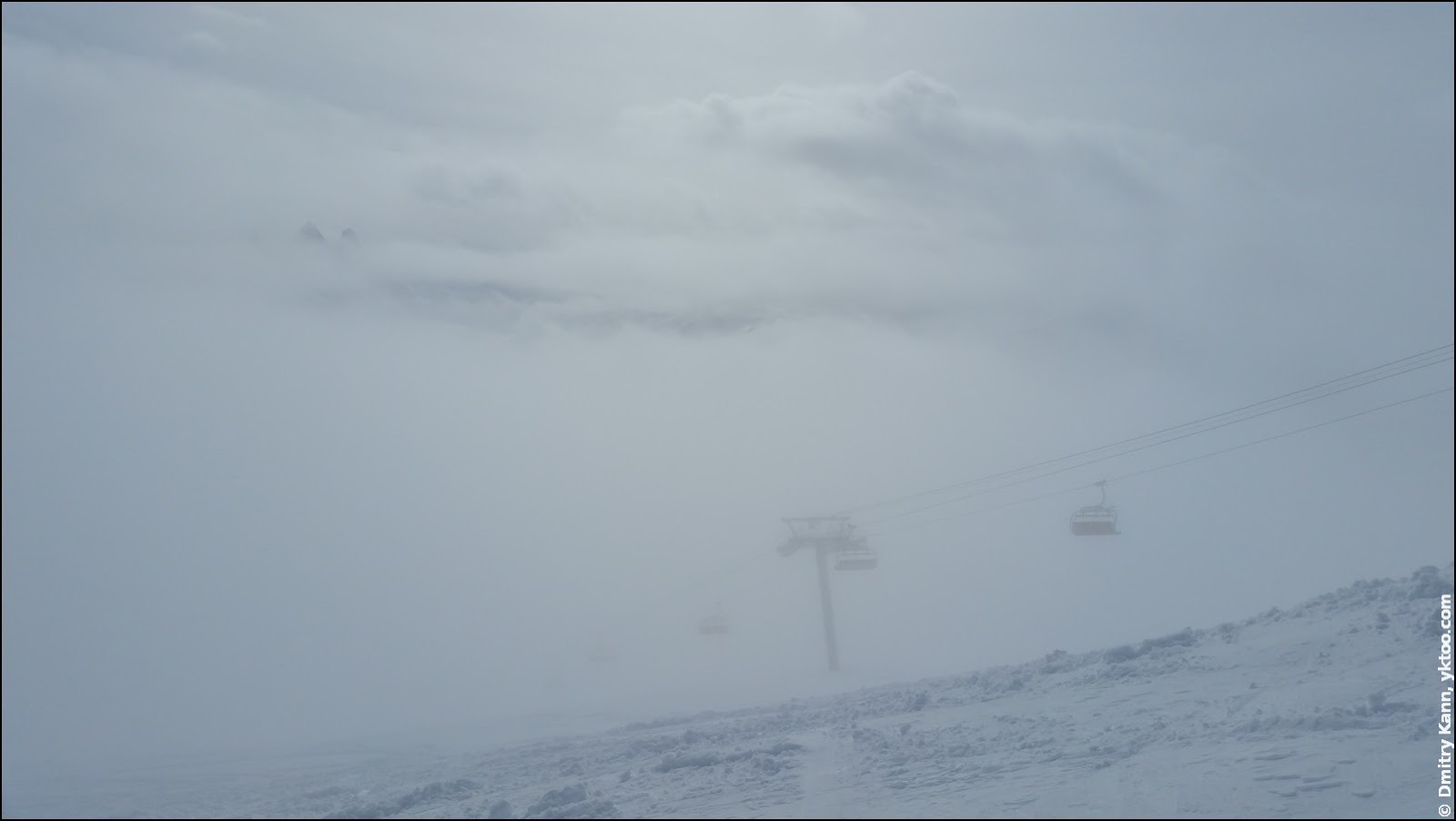
GoPro Hero 5
I’d also like to share my thoughts about the action cam mentioned above. GoPro Hero 5 is the latest-and-greatest model of this popular camera, which I purchased during a sale at MediaMarkt. Compared to the previous incarnations this model has got a lot of useful (and not-so-useful) features: touch screen, voice control, video stabilisation, support for 4K UltraHD videos, and it got water tight without a need for housing (which made the cam much more compact).
I’ve tried a number of ways of mounting it: on the helmet, on the chest with a special harness, hand-held with a selfie stick. My conclusion is that the helmet option provides the best results with snowboarding. GoPro is shipped with a curved adhesive mount, which perfectly fits the shape of the ski helmet.
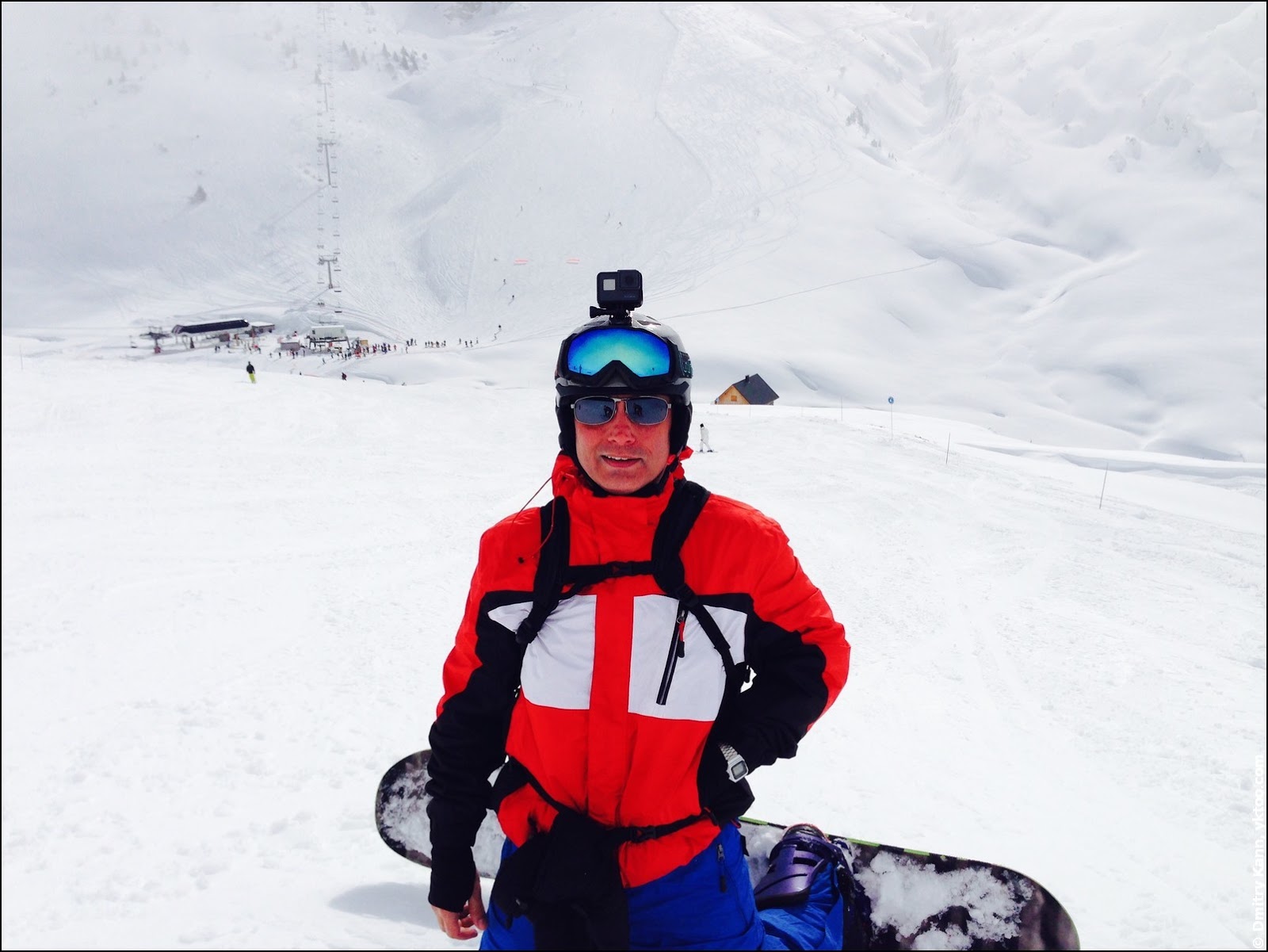
Initially I had some doubts about how sturdy this mount would be, but I must say that GoPro dudes know very well what they’re doing. The adhesive tape is incredibly strong. Despite occasional camera hits against the ski lift brace (which you should be mindful of when boarding and getting off the lift) and one complete roll over my head, the mount is still affixed as firmly as in the beginning.
One problem that arises from the fact the camera’s very modern is the huge volume of video files it produces. One hour of 4K-30 fps video (fps stands for frames per second) takes about 30 GB of storage. The cam can also record FullHD video up to 120 fps, with about the same appetite. On one hand, I could finally start producing content for my 4K UltraHD TV. On the other hand, buying appropriately sized MicroSD cards costs a fortune. Especially considering that 4K video recording demands expensive, high-speed, ones. So I’ve capped the quality at the modest 1080p-30 fps, which proved to be good enough. The video appearance is great, and the video stabilisation is doing its job pretty well.
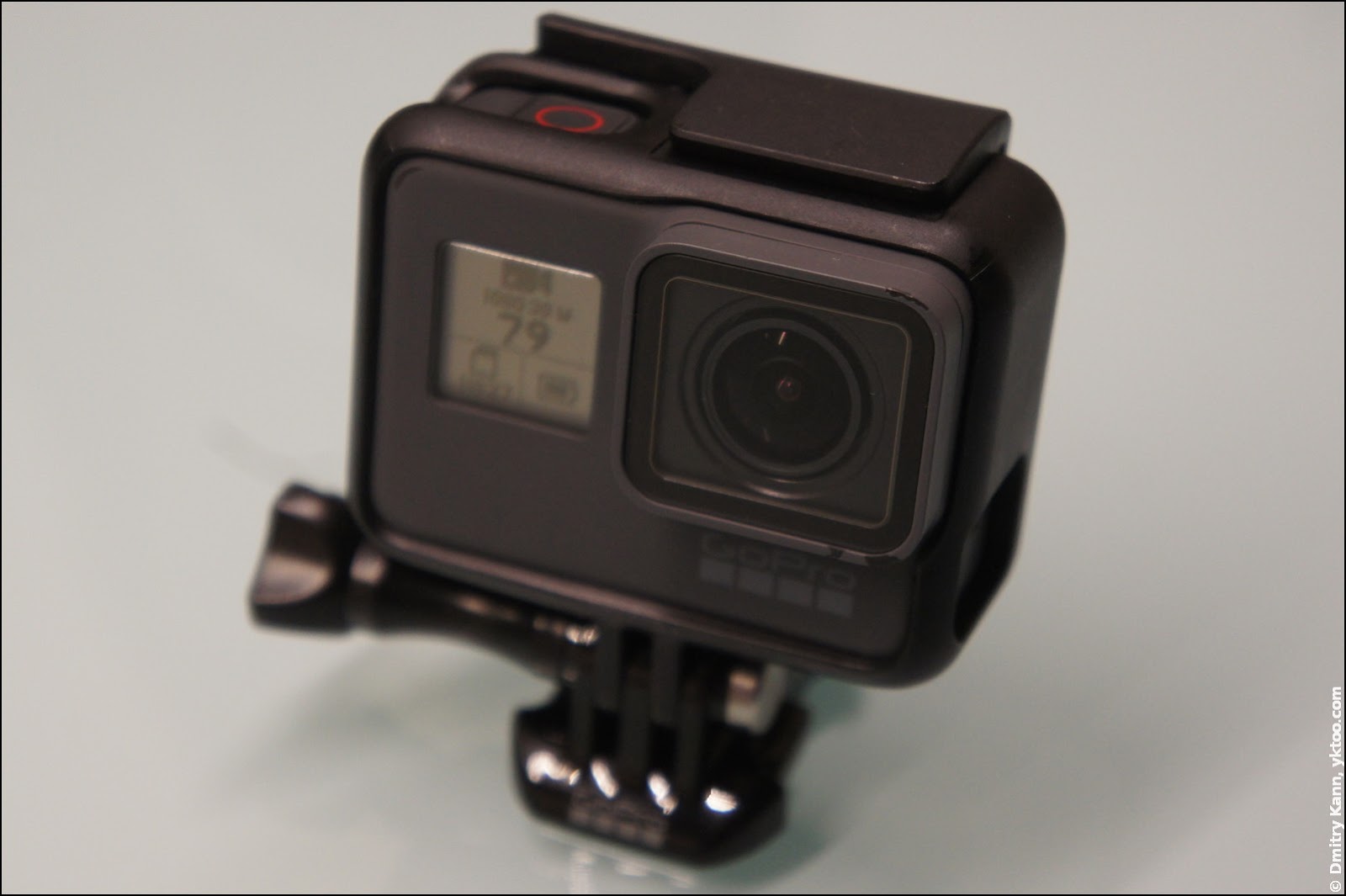
Another commonly mentioned problem of the Five are very tight battery and connector compartment doors. The requirement of being waterproof made them extremely difficult to open.
Still, you’ll have to open them often—at least to charge the camera. Which is its third problem: the tiny and low-capacity battery, which sustains only about two hours of video recording. I managed to keep it afloat for one full day of snowboarding by frequently switching it on and off, but in general I’d recommend having an external USB power bank (or a replacement GoPro battery).
Another word of advice if you plan to shoot action videos: figure out the appropriate camera position and tilt before using it. Otherwise you may find out later that your videos mostly contain snow—or sky. And then regularly check that the position is correct.
The video we’ve recorded is still waiting to be processed. We have filmed about a hundred gigabytes of video files over six days, so now we need to sort and edit all that. For now I’ll just show a short teaser:
Conclusions
So here are my conclusions.
Snowboarding is addictive—provided that you’ve had enough patience to get it under control. But it isn’t too addictive because snowboarding is physically very demanding, and your abilities tend to have a limit. One week in the mountains seemed too short for me, whereas two weeks was just good enough.
Snowboard is easy to control once you’ve mastered the following basic principle: your weight must always be on your front foot. In this case the risk of falling is minimal. In my own experience, I’d almost always fall because of retracting the weight onto my back leg. You’d usually do that instinctively, out of fear of speed/falling/zero visibility, but you have to absolutely learn this: whatever happens, lean forward!
Snowboarding is safe if you have learned the basic principles and you never exceed the speed you can steadily control. The speed I’m at the moment comfortable with is 50 km/h (31 mph) (although it depends on how bumpy the snow is), and my record so far is 69.1 km/h (43 mph):
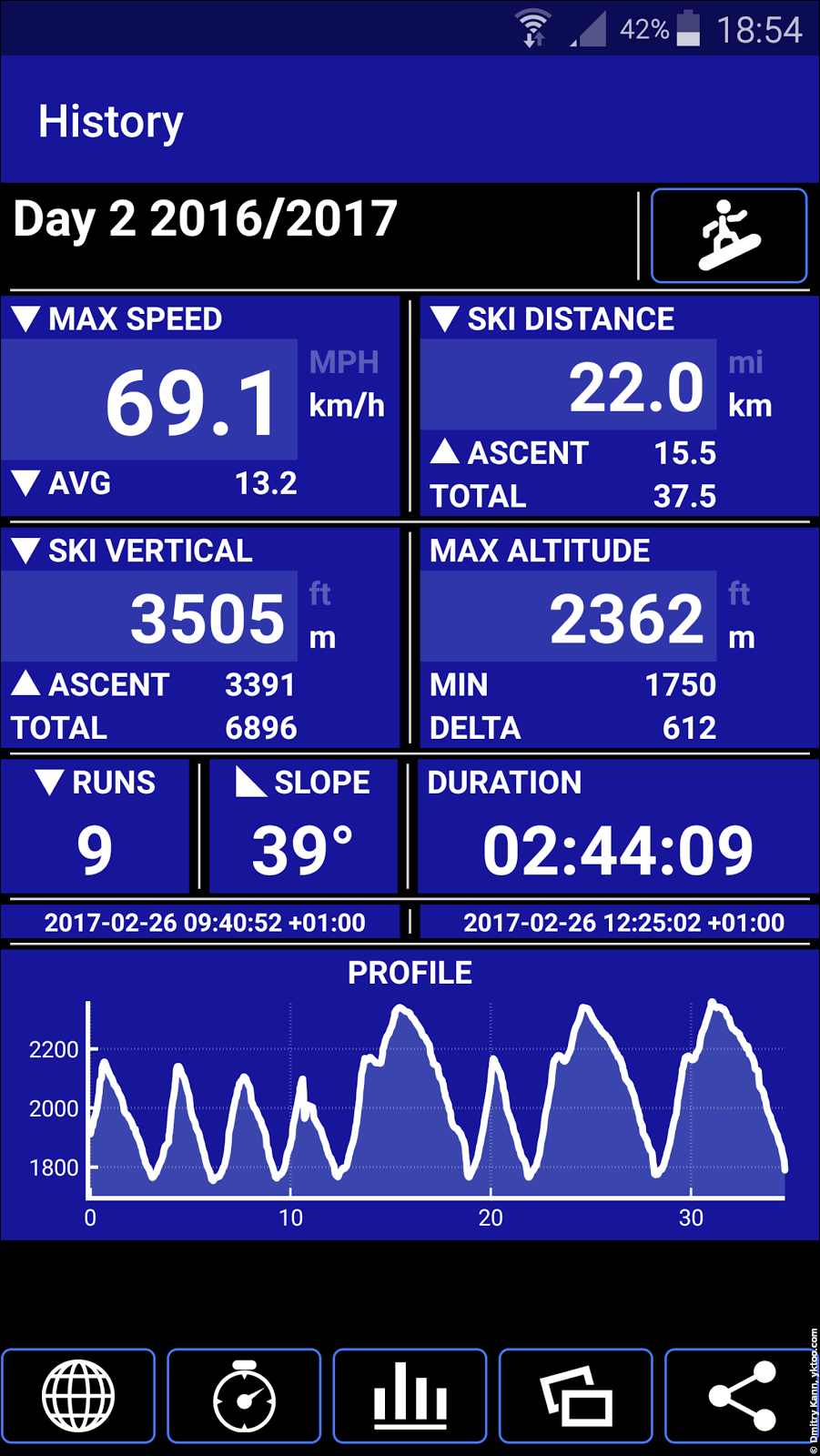
- Freeriding (or off-piste) is an awesome thing, but it requires a good deal of training and imposes a much higher degree of risk. It’s a good idea to first try it out by snowboarding right next to groomed pistes, in which case you’ll have a lesser chance of damaging the snowboard or injuring yourself. Moreover, this activity is pretty heavy for your knees. After this intensive week I got pain in my left knee, which was absorbing the shocks from the bumps. On one hand it’s good because it means that my weight mostly lay on my front, left, foot. On the other, there’s something to work on in terms of my shock-absorption technique.
And a few more words on the subject of Les Sybelles . It’s well noticeable that this resort has somewhat lower standards than La Plagne :
The snow and the slopes are hardly maintained. Because of that, in particular, some pistes were constantly out of service.
Many ski lifts are simple, non-detachable ones. During boarding they tend to hit you under your knees, which obliges you to stay alert. At the same time, they travel much slower than more expensive detachable lifts (7-8 vs. 15-17 km/h).
Individual ski areas are only connected by snowboard-unfriendly surface lifts (ski tows), which drag you with the speed of a snail for a long, long distance, and there’s no alternative to them. Moreover, all those inter-area lifts got closed at 4 PM, whereas all the others would run until 5 PM or so.
So to sum this all up, I don’t think I’ll ever come here again. Not that it’s bad in Les Sybelles , but there are better places!
And some more photos of this memorable vacation.
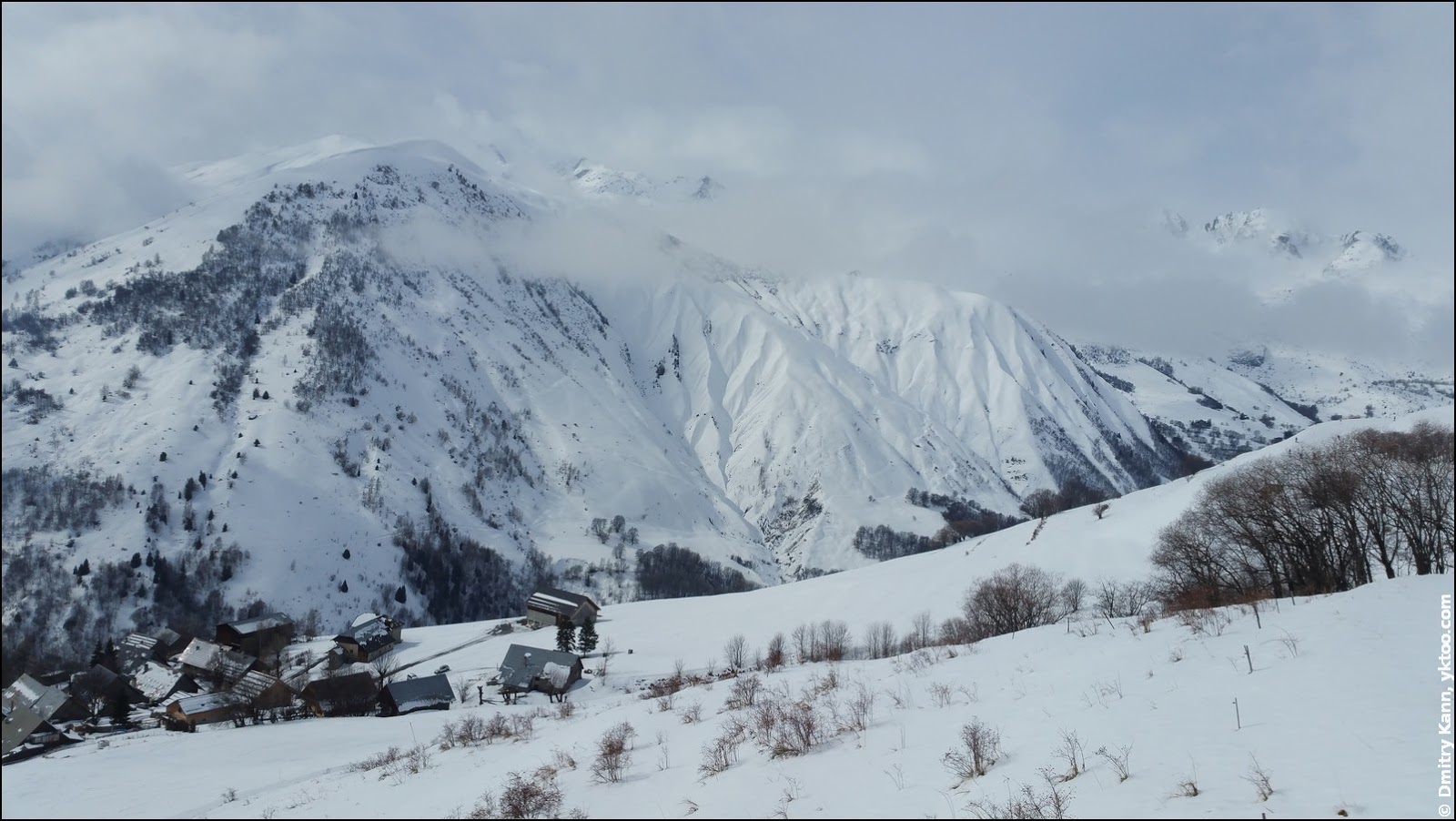
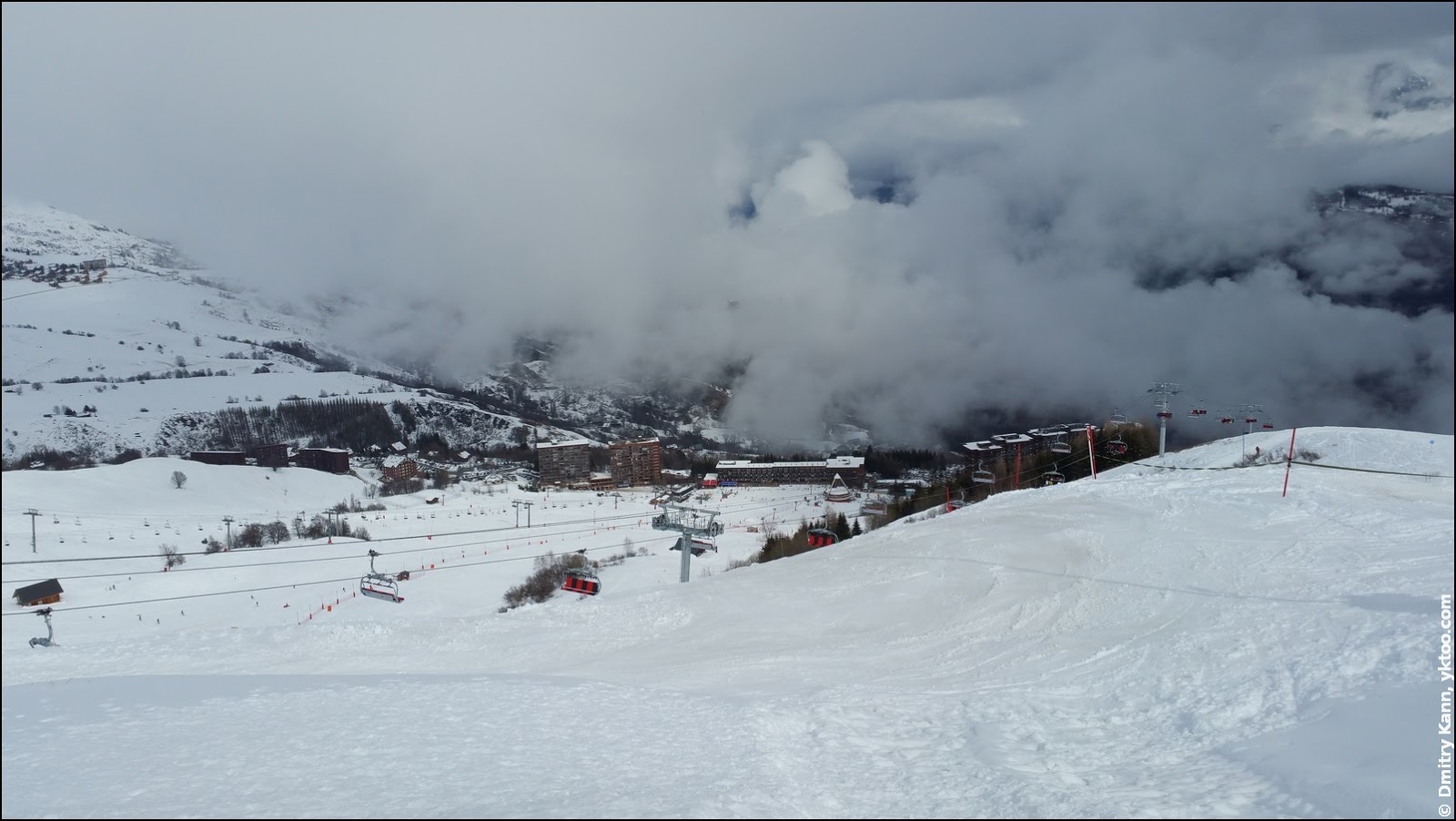
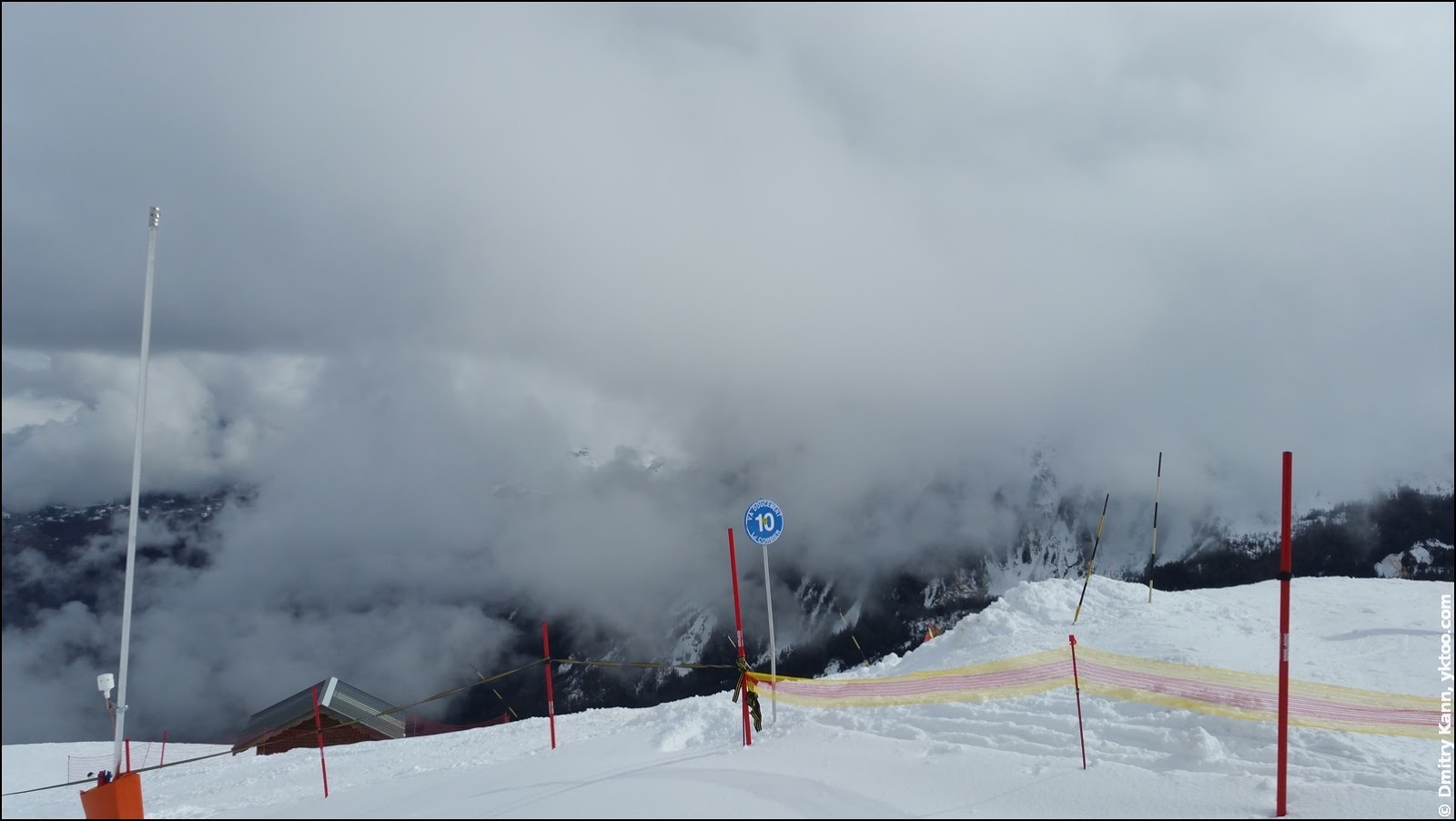
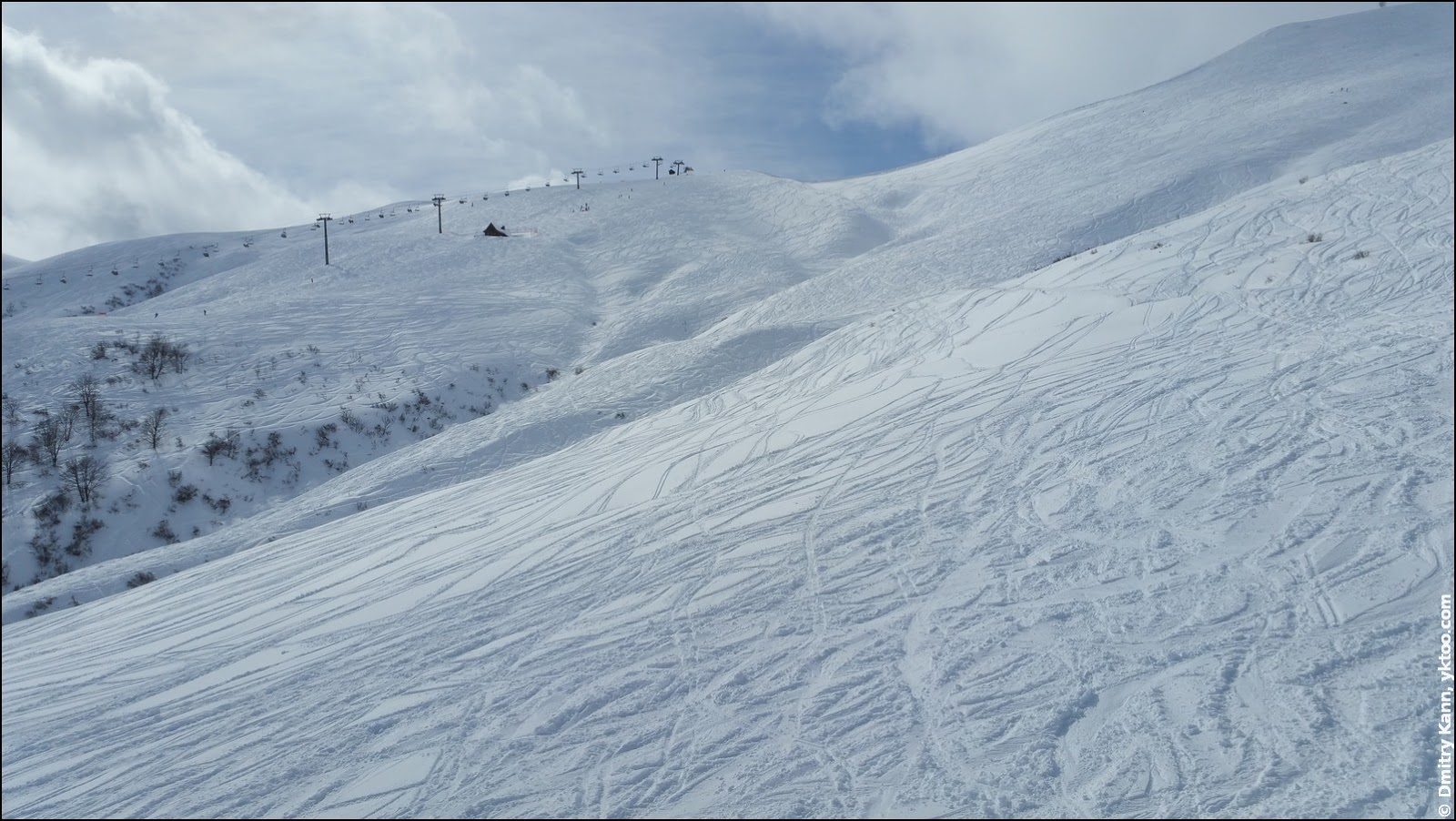
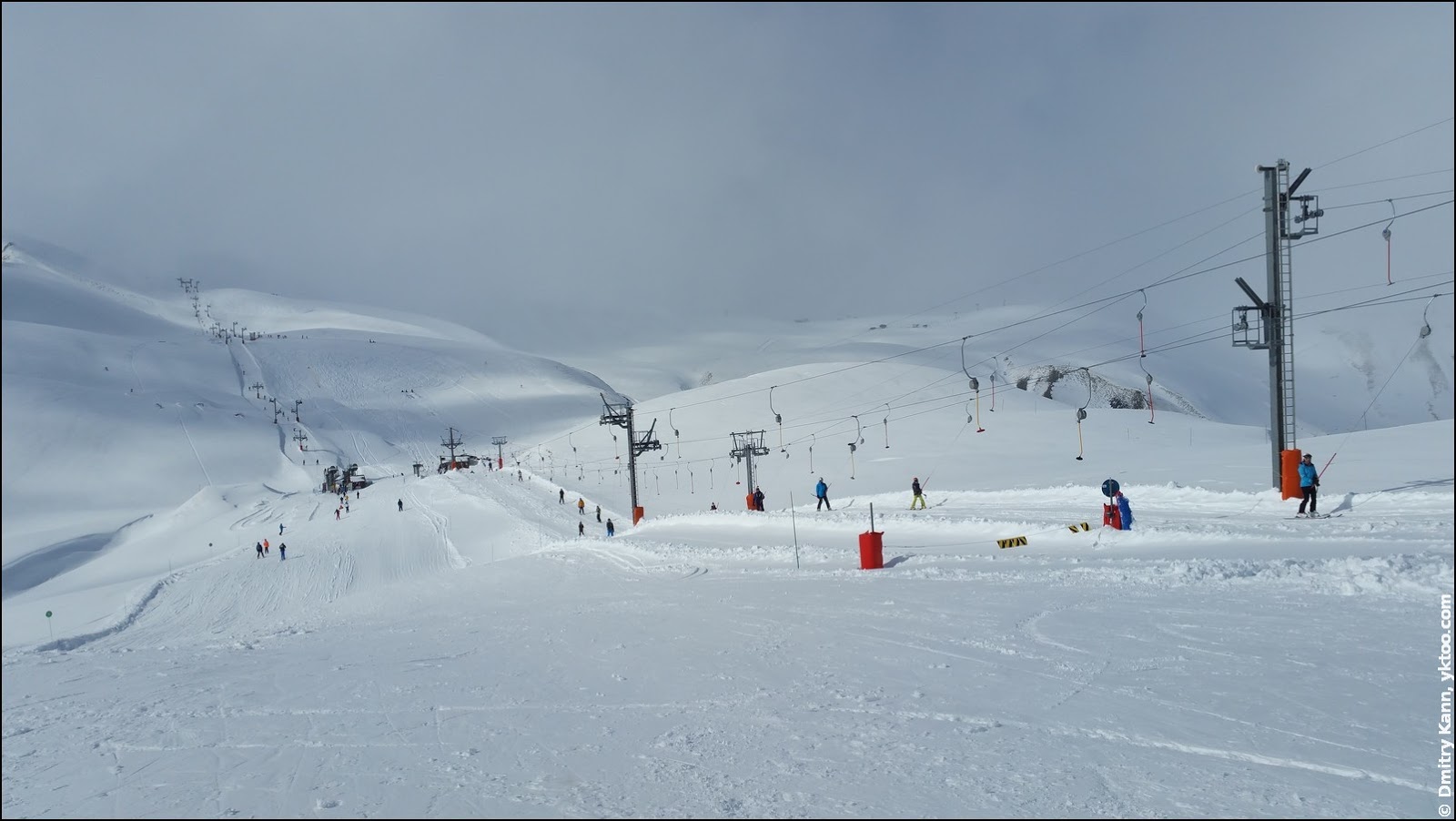
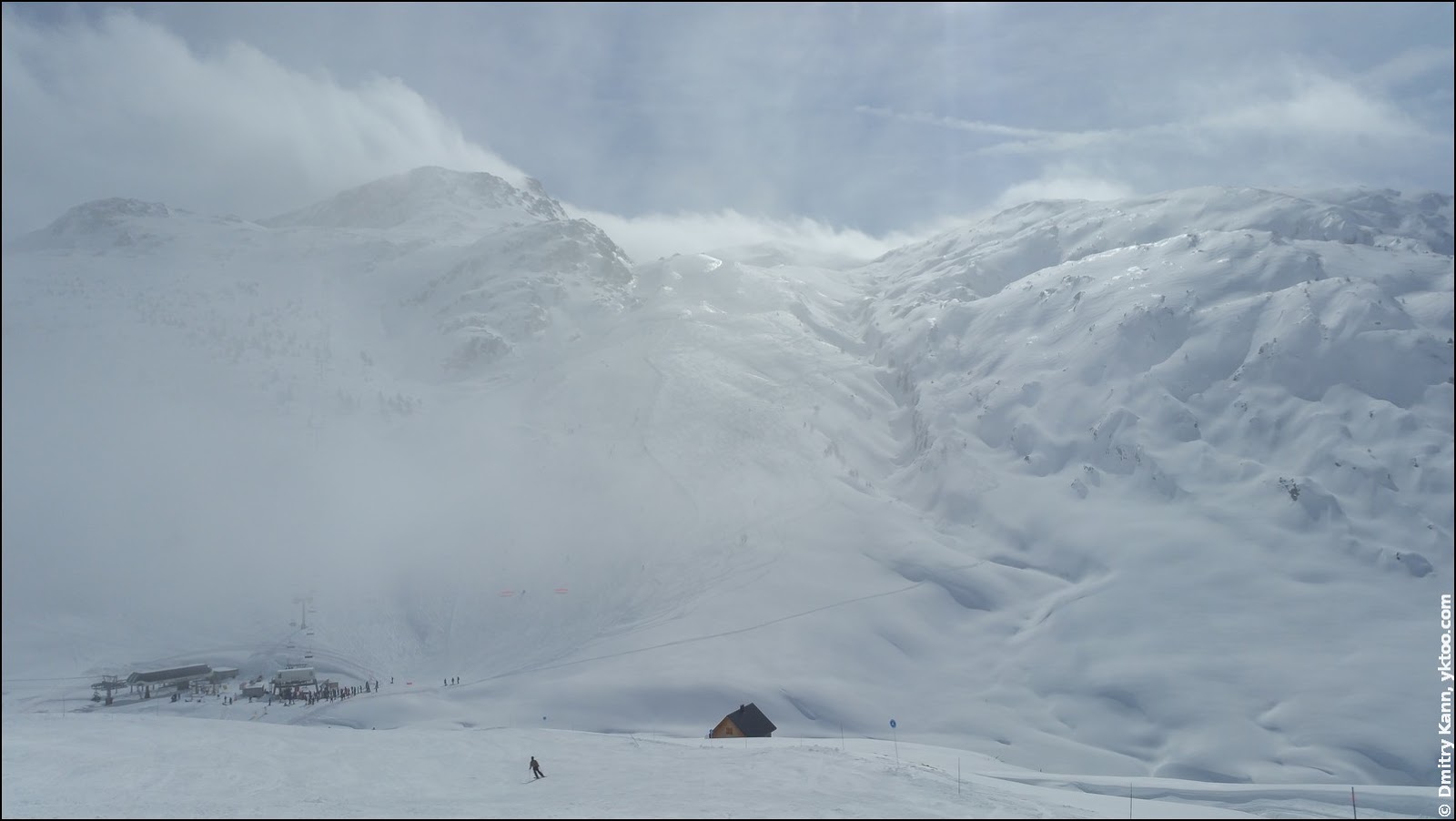
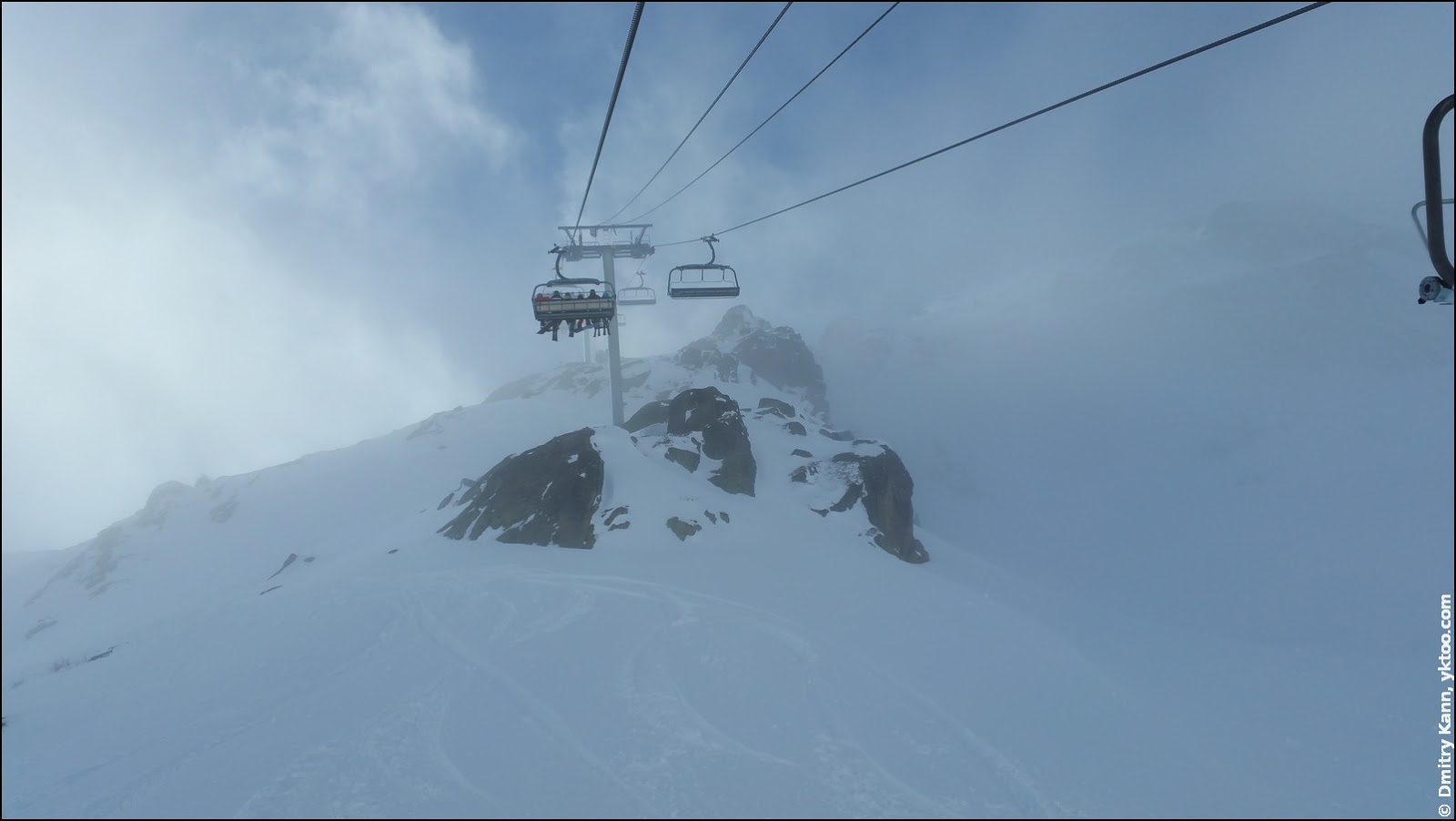
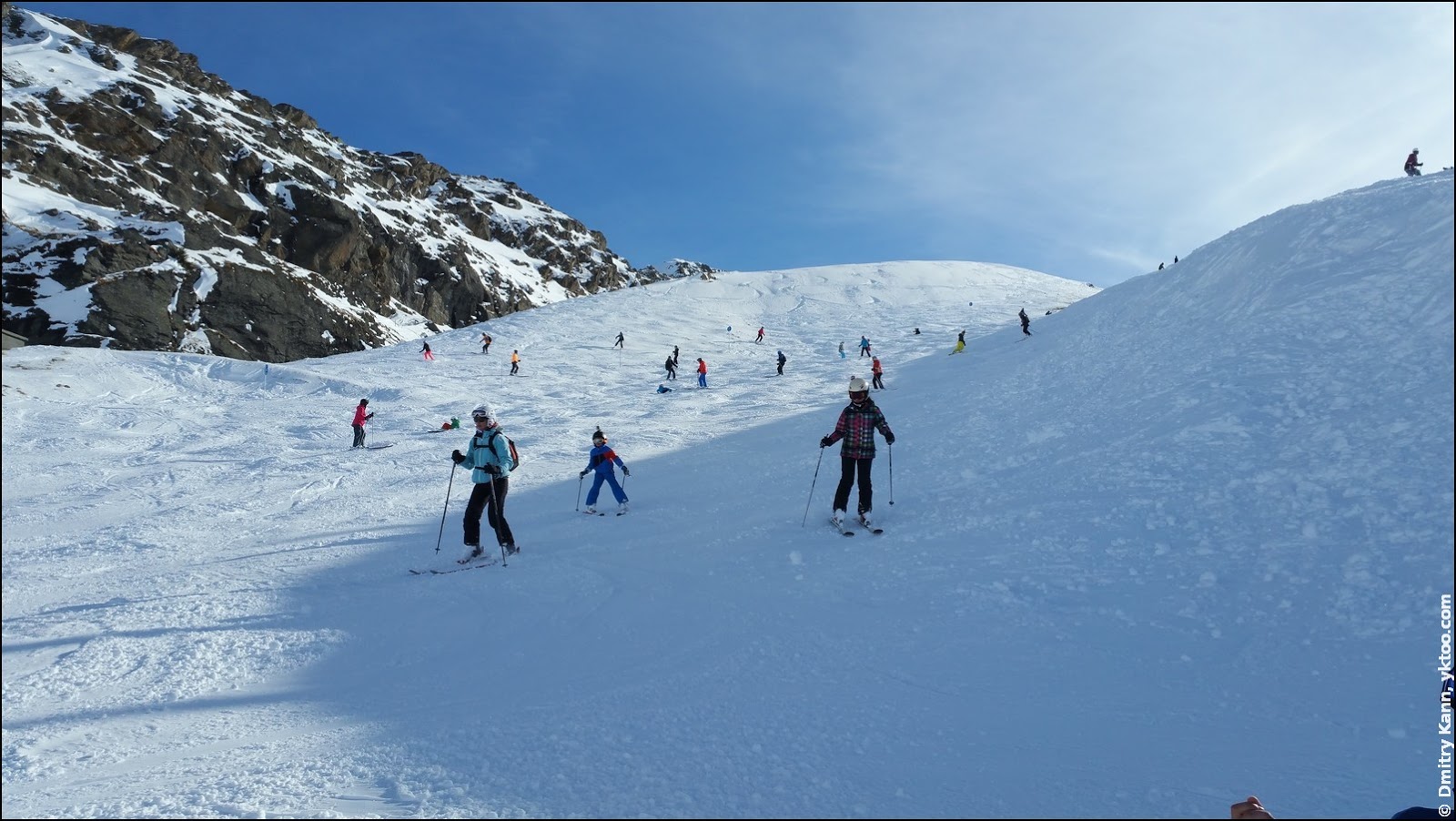
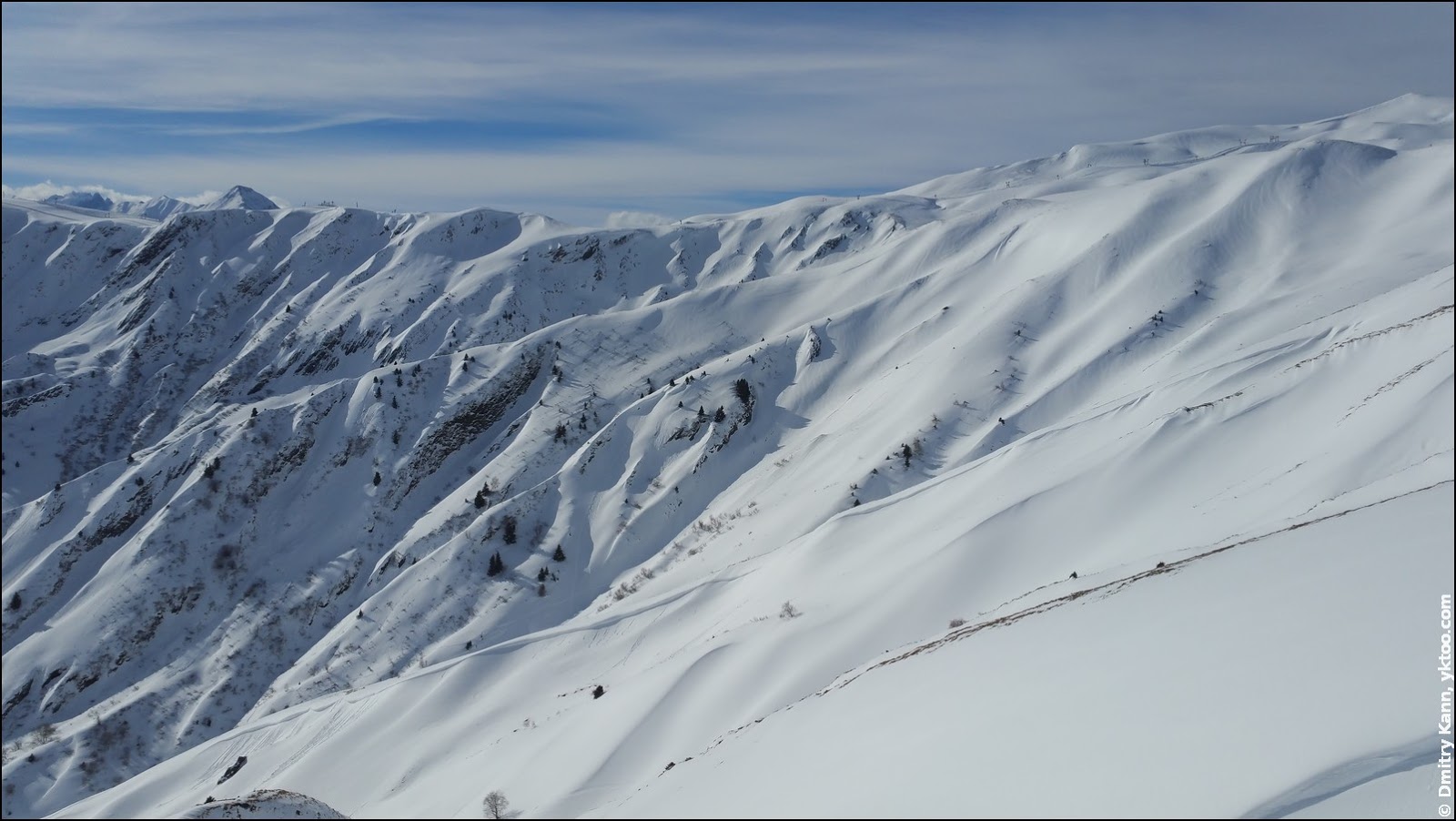
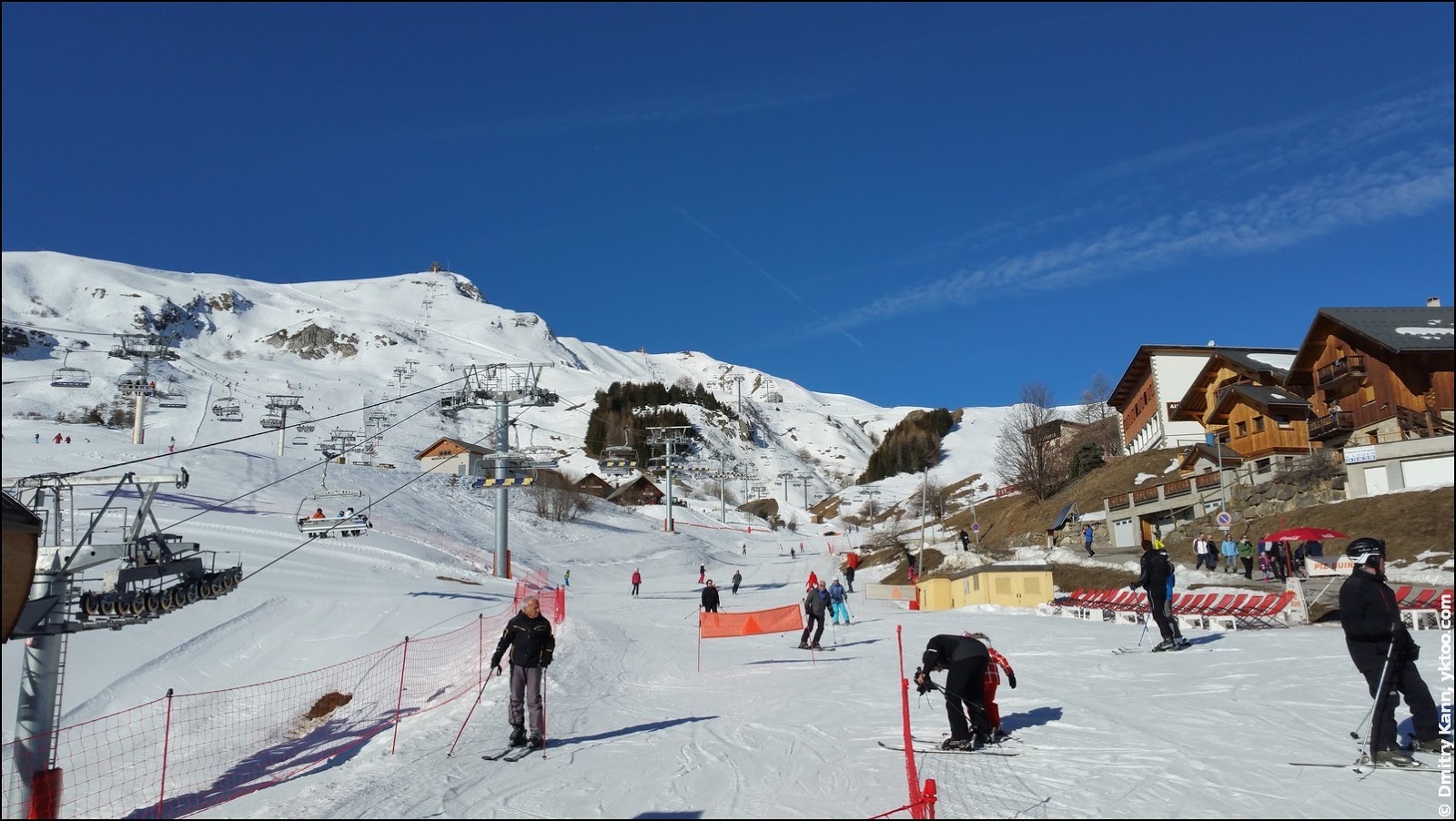
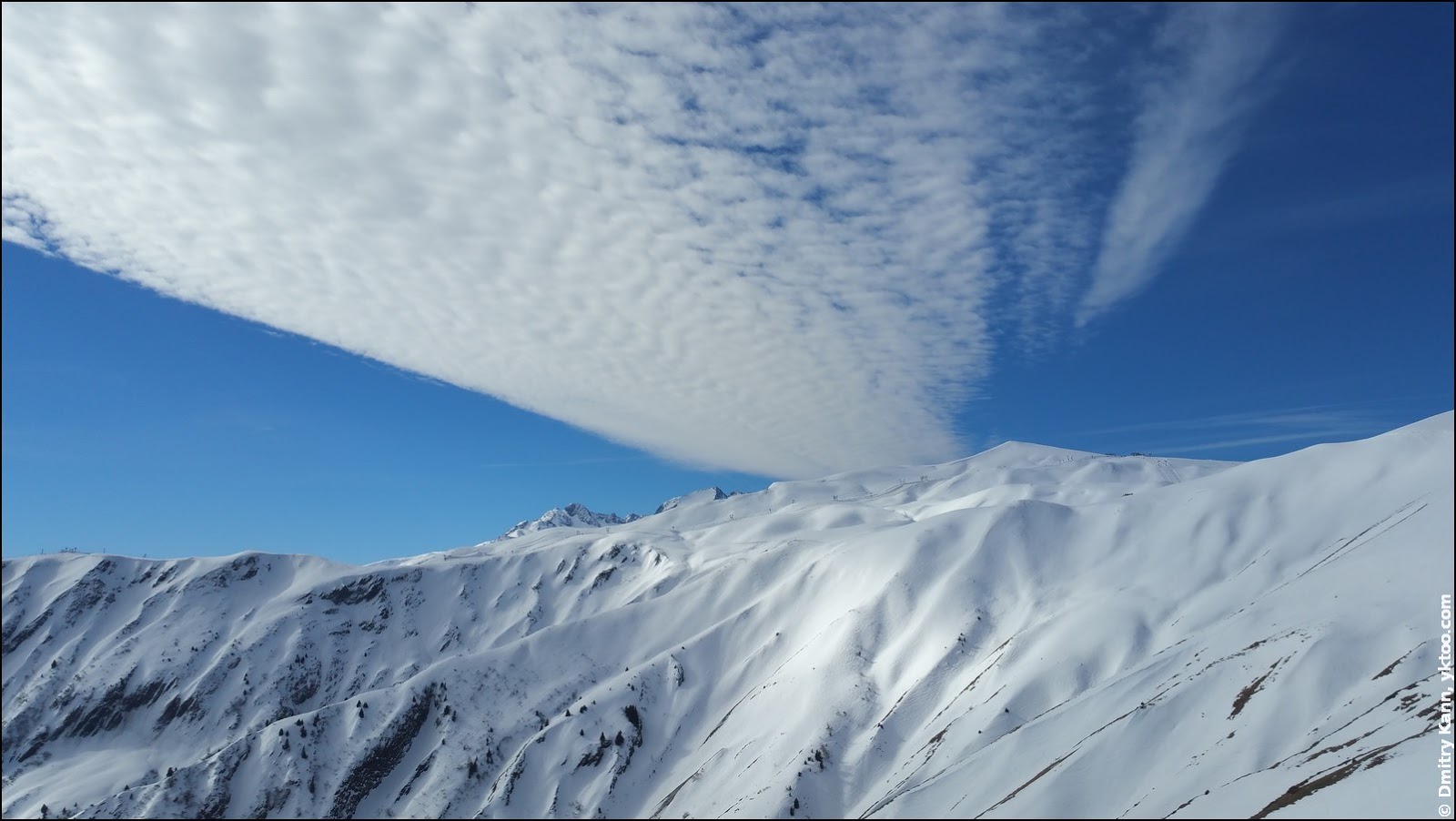
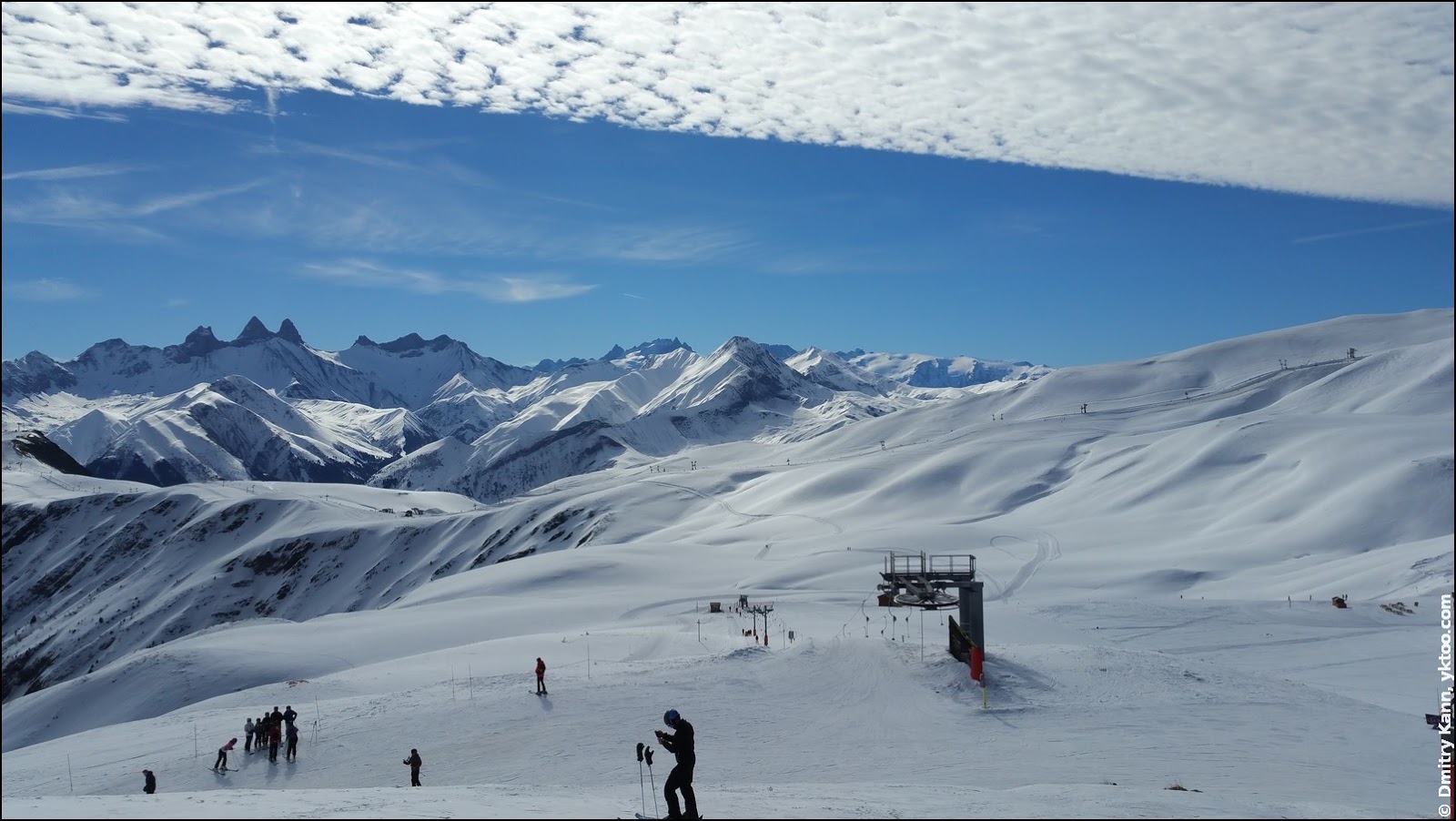
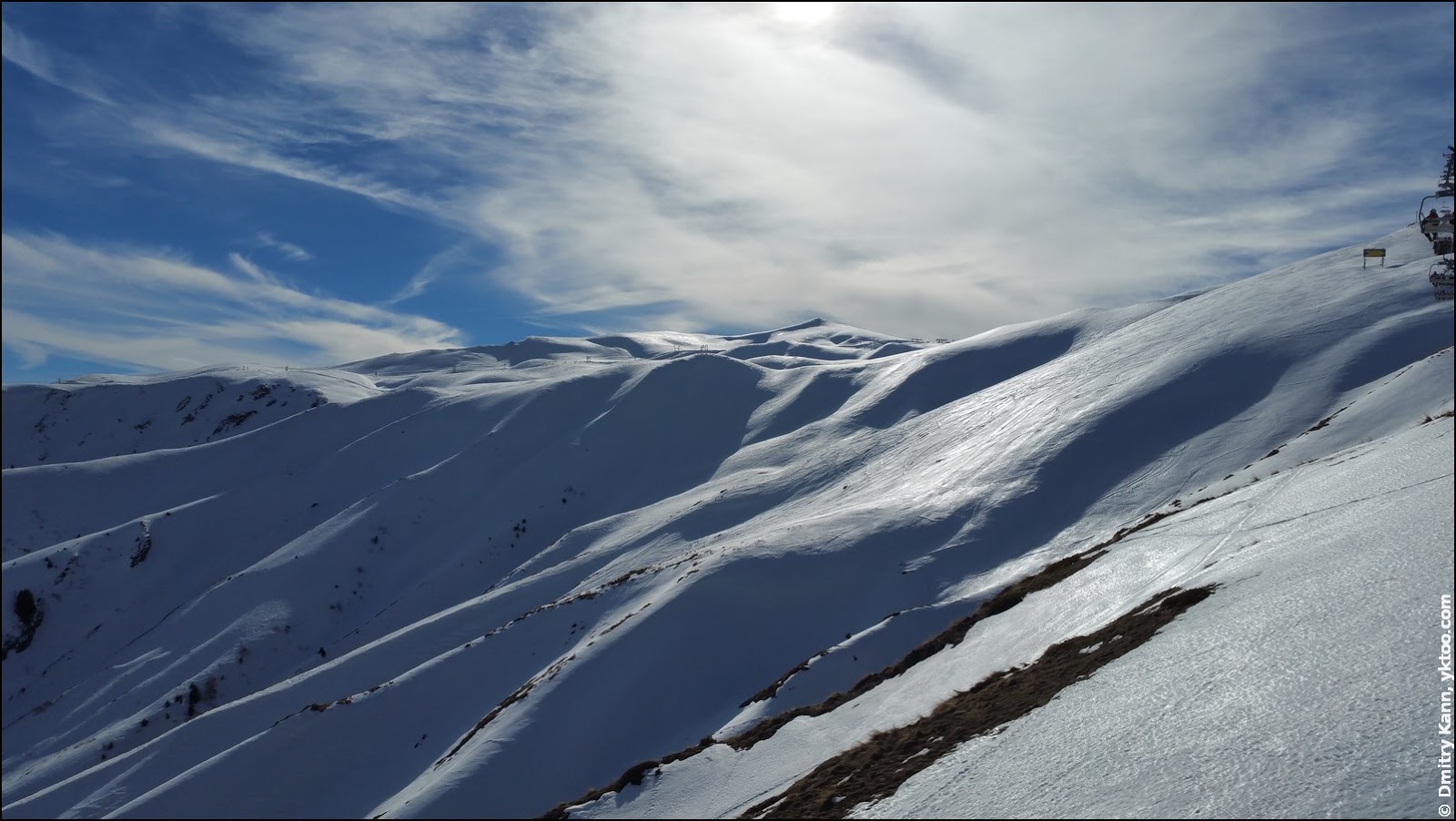
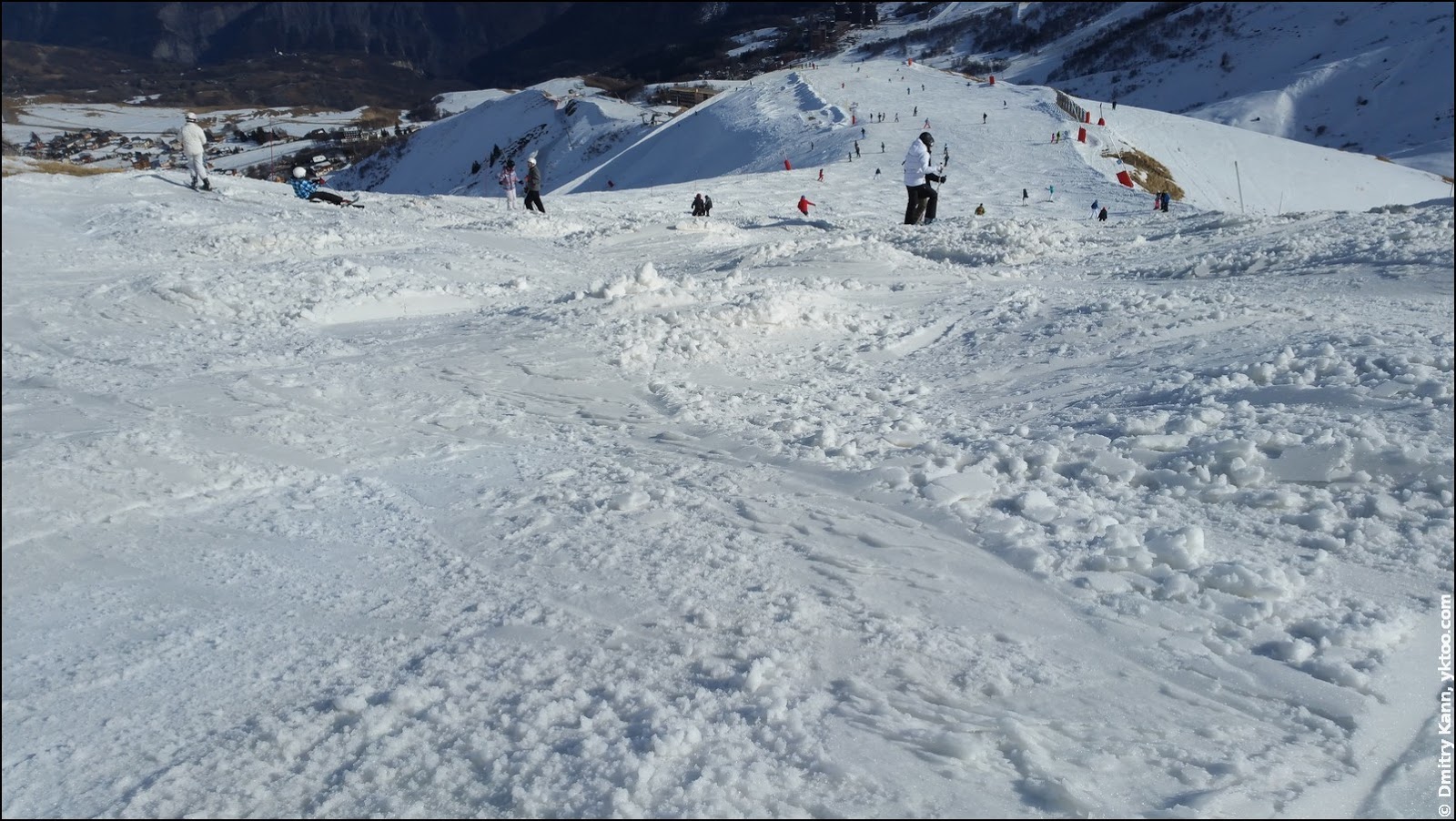
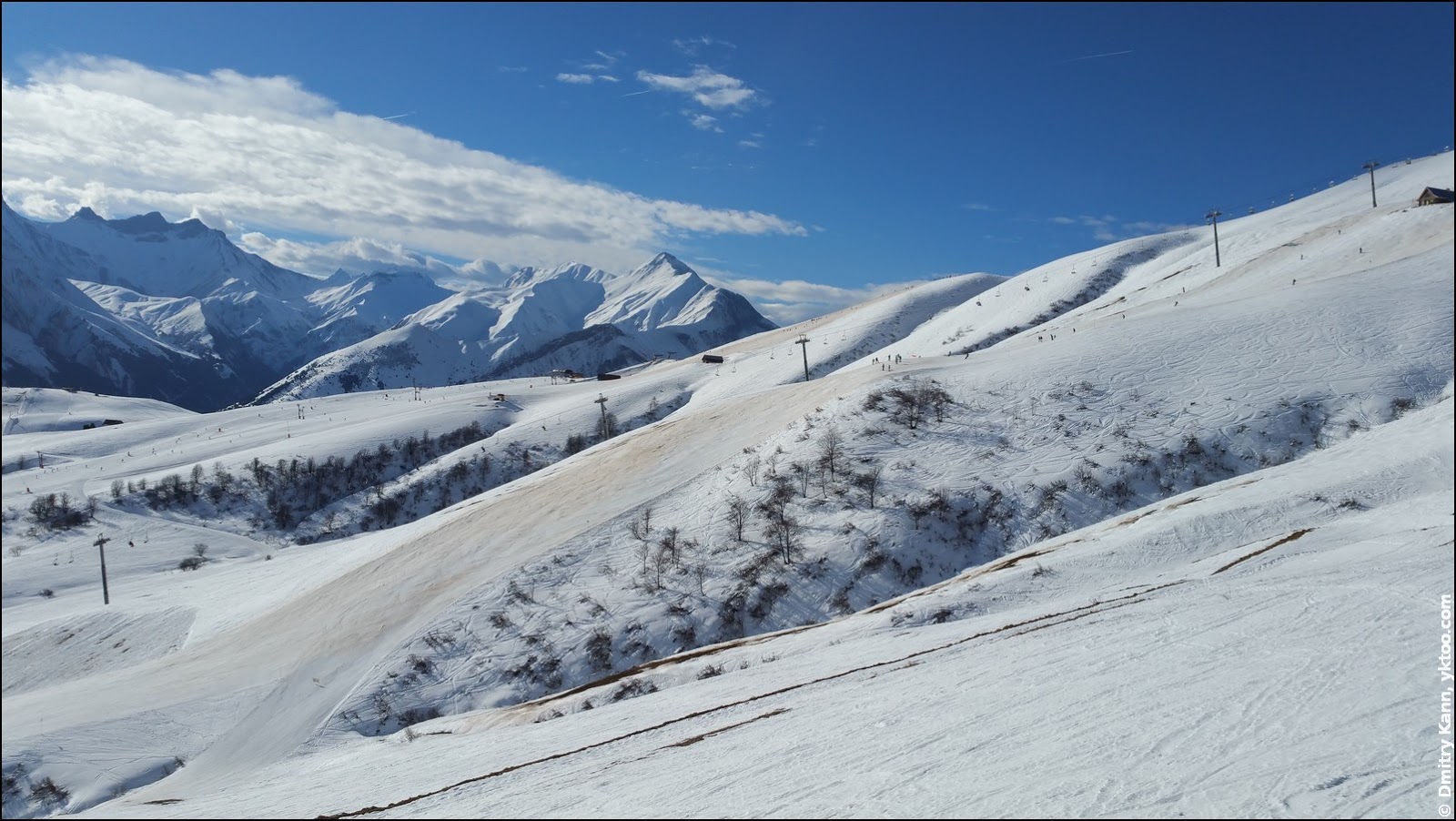
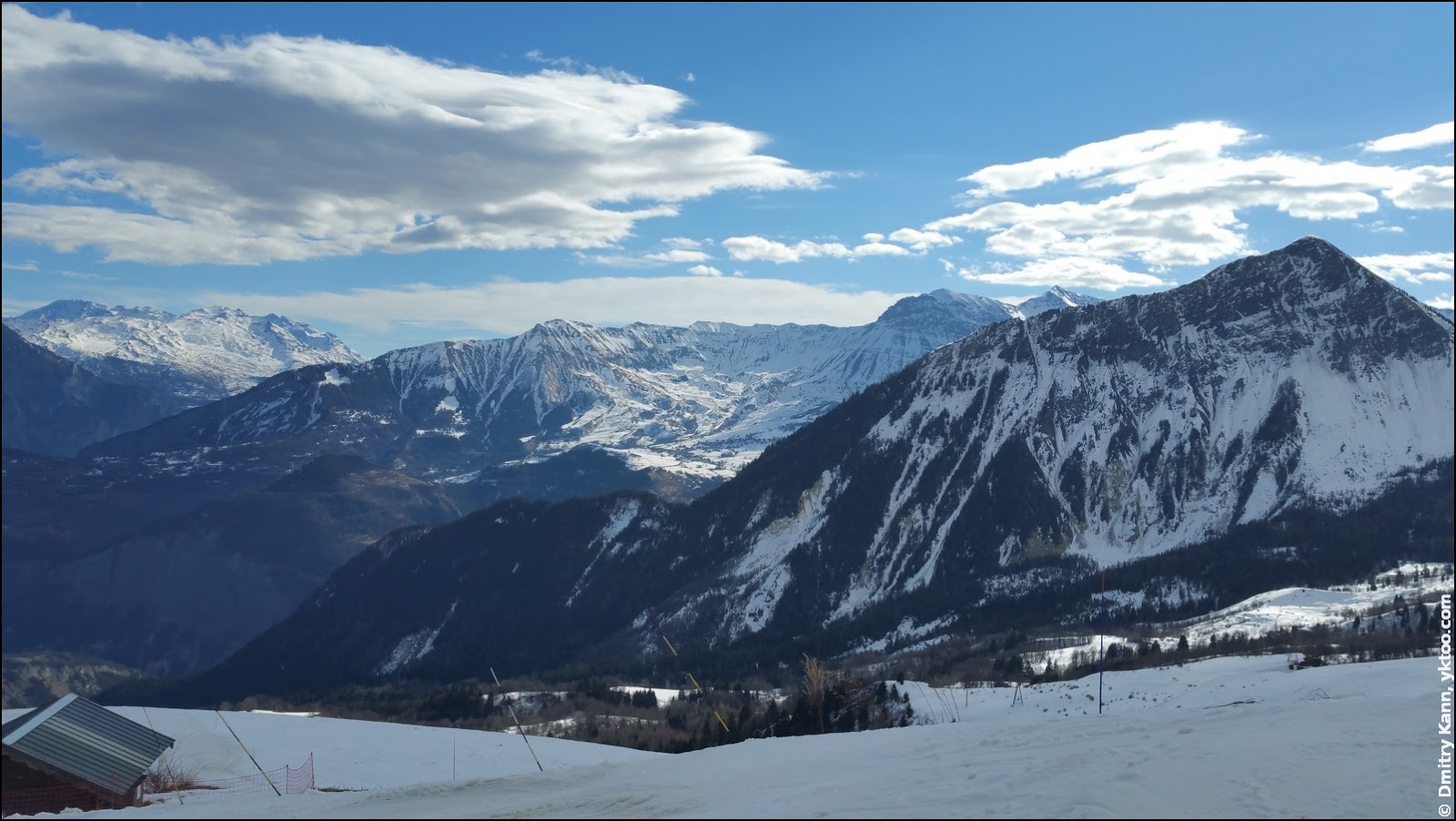
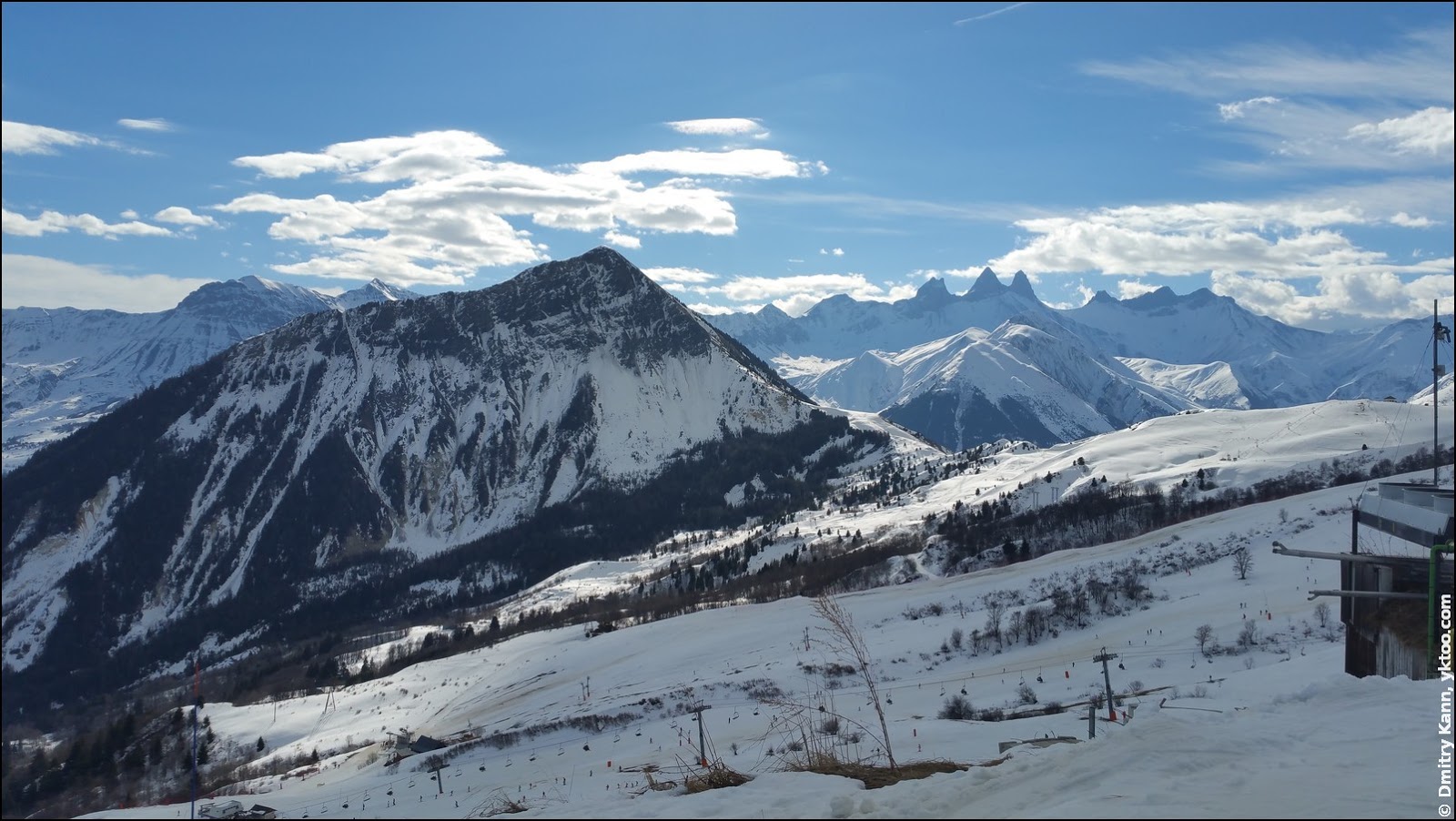
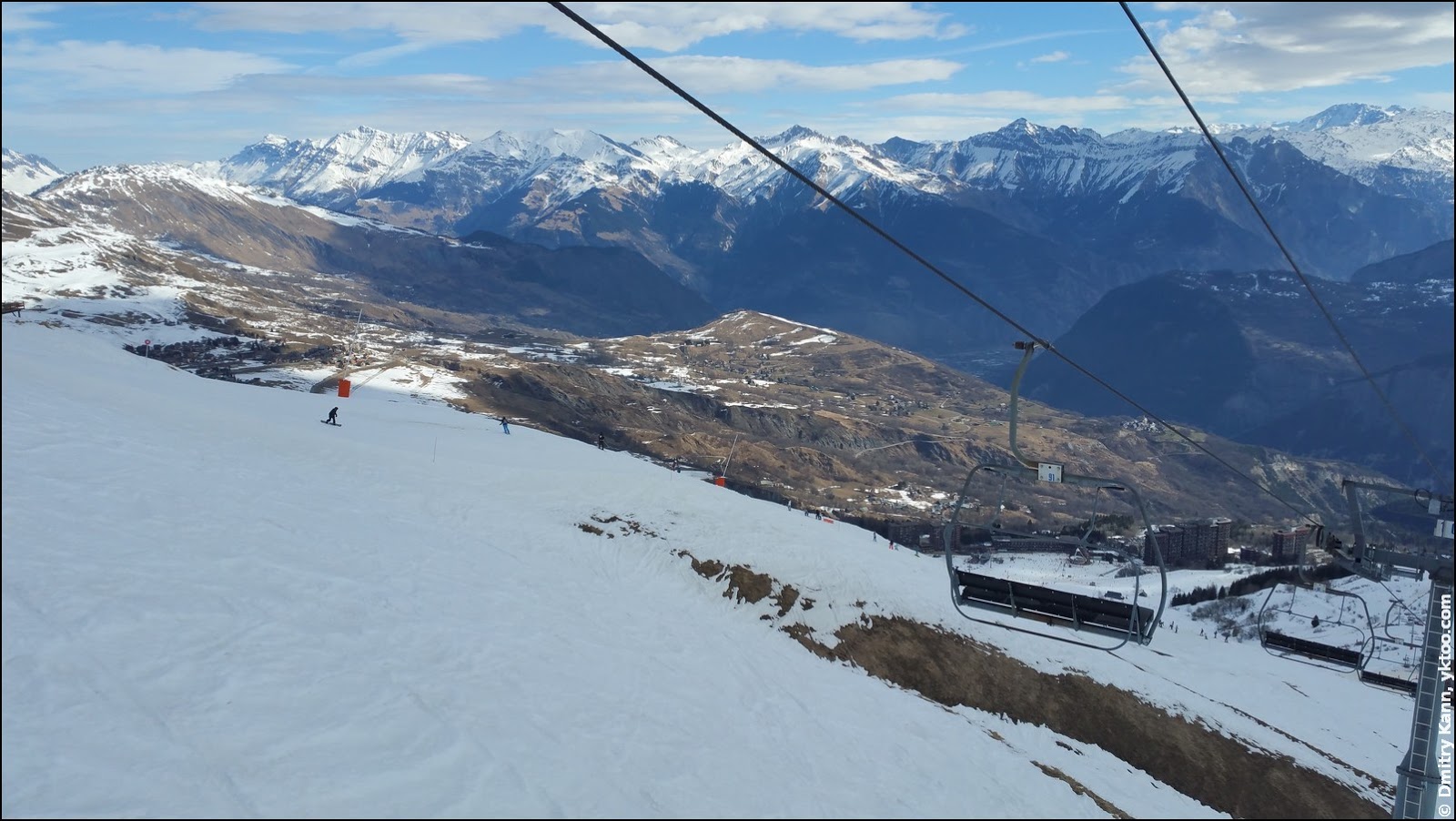
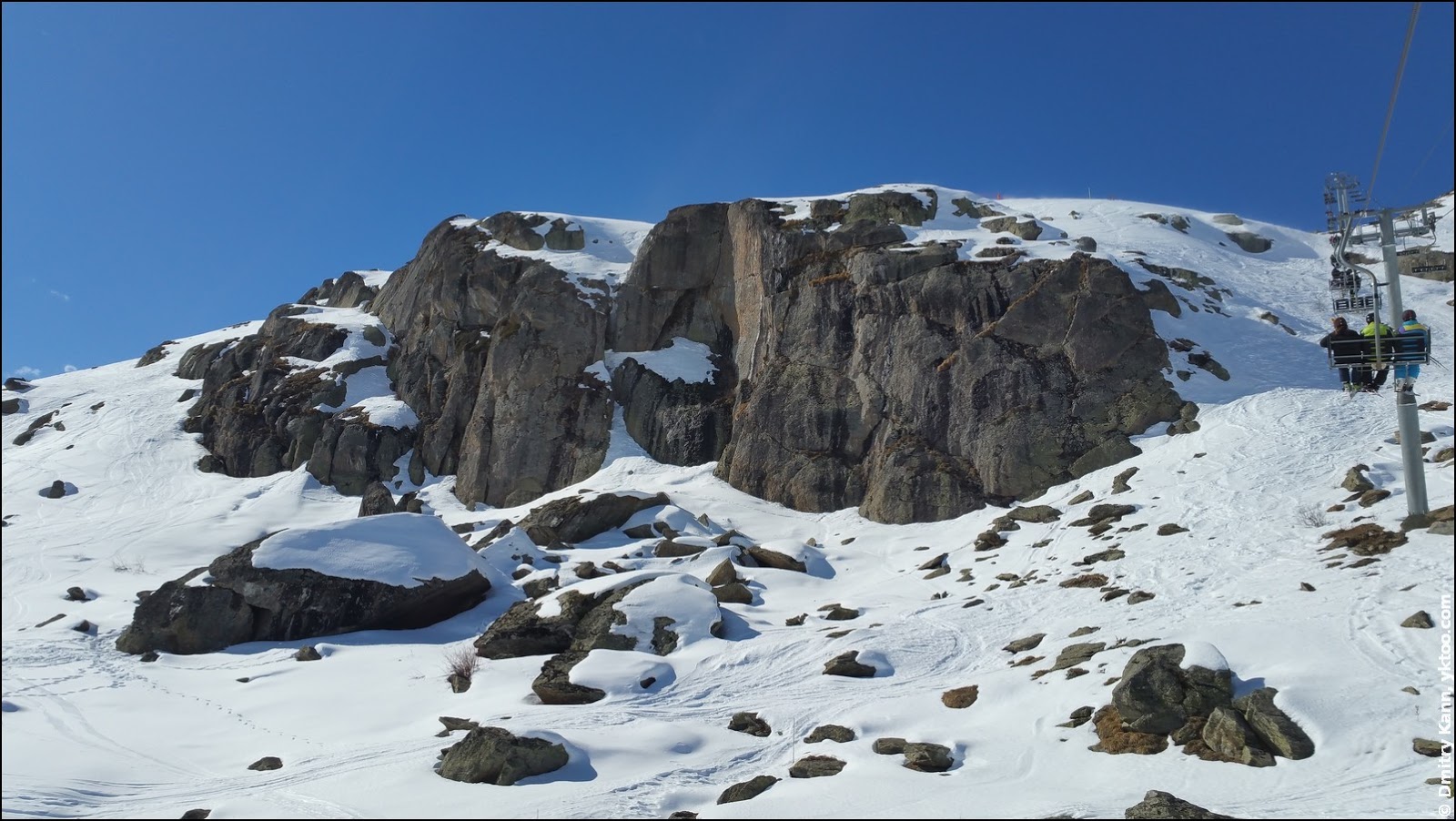
 — world’s fastest URL shortener
— world’s fastest URL shortener
Comments